AUSTRALASIAN BUS & COACH

































When it comes to key issues in the bus industry, customer safety is at the heart of innovation
When it comes to remarkable milestones in business, achieving 45 years of customer service has to be high on the list.
For the team at Volgren, who we feature in this month’s cover story, the journey from that first bus delivery, way back in 1979, to now, has been one of growth, innovation and good business sense.
What started out as a route bus service in Dandenong has evolved to become a nationwide manufacturer of buses, supplying public transport fleets throughout the country.
More recently, Volgren has been focused on the next big thing in the transport sector, stepping into the zero-emission challenge and meeting it head on. Its carefully planned approach will see the company have more than 150 of the new age buses on the road by the end of this year. Read more about their journey from page 20.
The Volgren journey is reflected, in a way, by that of fire suppression experts KlineFire.
As one of the world’s leading businesses in an industry dedicated to keeping people safe from fires in vehicles and machinery, KlineFire has had to evolve its offerings to match the revolution of the transport industry.
While fighting fires that may have eventuated from unforeseen accidents or malfunctions in petrol and diesel vehicles has been the core element of KlineFire’s business for many years, the company has recently turned its attention to the electric bus revolution.
Testament to the skills of the KlineFire engineers, the company has developed a range of industry-leading products that can be fitted to buses, trucks and machines to ensure any fires can be
dealt with quickly, cleanly and safely in electric vehicles using the very latest in suppressant and sensor-based technology (see page 24).
Playing in a similar space is automotive supplier Webasto. The company has put safety at the forefront of its design task, creating a new model of battery that has been built to exceed all current safety standards while maximising its usability in terms of battery size and weight (see page 28).
Two of our regular ABC columns, from QBIC and BIC, are also focused on safety.
Our friends at BIC have shone the spotlight on safety for school children and a commendable awareness program being rolled out in some states that highlights the importance of seat belts on school buses (page 19).
In the wake of 15 serious bus crashes in the past 12 months, including a horror crash at Gumlu in Queensland on June 30 that saw three passengers lose their lives, QBIC’s Jason O’Dwyer shines a light on the steps currently being taken in his state to address safety and the challenges involved in terms of enforcement and funding (page 48).
As winter arrives, the temperatures drop and the roads become icy, at least in the southern parts of Australia and New Zealand, we hope for a safe season for everyone involved in our industry.
To help pass the winter days, there’s plenty of other great stories to dip into in this issue of your magazine. I hope you enjoy the read.


Geoff Crockett MANAGING EDITOR, ABC






4. editorial | safety first
Whether it’s seatbelts on buses, fire suppression systems or cutting edge battery design, safety issues are high on the agenda for everyone involved in the bus industry
8. news | all aboard
An overview of the latest Australasian and international bus and coach news that you need to know features
19. column | bic SCHOOLED FOR SAFETY
The Bus Industry Confederation and a host of government and industry partners have put the safety of school children on buses firmly on the agenda
20. cover story | volgren
45 YEARS OF EXCELLENCE
Celebrating their 45th year, Volgren takes pride in looking back at the extraordinary path that has led them to this significant milestone
24. zeb safety feature | klinefire MASTERS OF FIRE SAFETY
From optical sensors to dry power and hyper-care support, KlineFire brings one of the world’s best fire suppression technologies to Australia
28. zeb infrastructure feature | webasto SETTING THE STANDARD
In the wake of recent concerns in the industry around electric bus battery safety, Webasto is reiterating its commitment to safety and innovation in the sector with its newest product offering
30. feature | bus stop sales SPEED CENTURY
Queensland Thermo King (QTK) introduced its first electric HVAC unit to Australia five years ago. Having already reached a special milestone, the brand is looking to take its zero-emissions technology to the next level
35. zeb feature | vdi yutong TRIALLING THE FUTURE
VDI’s commitment to electrifying the industry is set to deepen with its upcoming electric bus trials in regional NSW in partnership with Transport for NSW
38. zeb feature | byd ADVANCING AFTERSALES
While BYD has already dominated the electric bus market, it now has its eyes set on improving its aftersales support
40. operator feature | weir bros RICH HISTORY
Within sight of Mount Taranaki, Robb Webb talks to the people who run one of New Zealand’s most successful family-owned and operated bus and coach firms
42. operator feature | rockleigh tours FAMILY AFFAIR
As a well-known community and industry icon, Laurie Pincini is ensuring family business Rockleigh Tours remains as safe and popular as ever with its latest acquisitions
46. zeb infrastructure feature | nz focus SUPPORT ZEBS
The NZ bus industry is leading the way in the nation’s net zero transition, but what else can be done to support this trend?
46. column | bca nz TOUGH QUESTIONS
The BCA is seeing the impact of governmental changes on the ability to attract and retain drivers in the industry
48. column | qbic PROTECTING LIVES
QBIC’s Jason O’Dwyer writes about strengthening Queensland’s bus safety measures
51. competition | best bus WA WONDER
The June winner of ABC’s Best Bus is a stunning dawn shot of an Irizar Go West coach in the Western Australian sun
49. events INDUSTRY EVENTS FOR 2024
Be sure not to miss out on an opportunity for these fantastic in person events
54. factory facts | bus deliveries JUNE DELIVERIES
We have all the latest bus and coach supplier sales data collected and recorded for you review, check out how the market has performed in the past month
58. back seat | news BRINGING BACK THE FUN
The Hobart Fun Bus is back with a bang as new owners look to revamp the Tasmanian party experience for locals
EXECUTIVE
Head of Customer Experience: Regina Fellner
EDITORIAL & DESIGN
Manager Editor: Geoff Crockett
e-mail: geoff.crockett@primecreative.com.au
Journalist: Tiarna Condren e-mail: tiarna.condren@primecreative.com.au
Design: Daniel Truong/ Daz Woolley
PRINTING
Brougham Press
ADVERTISING
Trader Group Sales Manager: Asanka Gurusinha ph: 0423 312 298 e -mail: Asanka.Gurusinha@primecreative.com.au
Business Development Manager – Bus: Adrian Kos ph: 0413 777 670 e-mail: Adrian.Kos@primecreative.com.au
SUBSCRIPTIONS www.busnews.com.au/subscribe ph: +61 (0)3 9690 8766 Mon-Fri 8am-4.30pm (EST) e -mail: subscriptions@primecreative.com.au mail: 379 Docklands Drive, Docklands VIC 3008 Australia





Nearly 5,000 Sydney buses will be given upgrades including on-board transit screens
Western Sydney commuters will soon be riding around in better buses, more often, as the NSW government has allocated $139.5 million to the state’s bus network to modernise the fleet and create more reliable, accessible services.
The work, set to begin later this year, will see upgrades to 4,000 Opal-enabled buses in Greater Sydney and another 1,000 in outer metropolitan areas.
The upgrades will involve installing modern passenger communications including on-board screens and audio announcements – which have been tested in the Northern Beaches – so commuters know which stop they are at and where to get off. It will also eliminate so-called ‘ghost buses’ by further replacing old technology to provide passengers with live, accurate information about when the next service is coming.
“Millions of people rely on buses –they’re the cornerstone of a thriving, interconnected and reliable public transport network,” transport minister Jo Haylen says.
“We’ve done a lot of positive work with buses since coming to government but there’s still more to do – and that’s what this investment will begin to deliver, especially for communities in our growing West.”
These upgrades will be the largest coordinated overhaul in NSW history, with premier Chris Minns saying it will make a major difference to passengers across NSW.
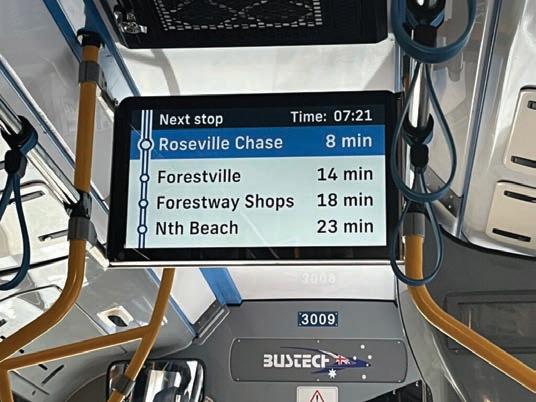
“These are modest upgrades that will make a major difference to passengers across NSW, while continuing our transition to net zero public transport and driving local jobs and manufacturing in the emission-free bus sector,” Minns says.
The 2024-25 Budget will also inject $24.7 million over four years for more services, new routes and more Zero Emission Buses (ZEBs) in Western Sydney which will create opportunities for local manufacturers.
Key suburbs to receive critical changes include Penrith, St Marys, Mount Druitt, Marsden Park, Riverstone, Blacktown, Eastern Creek, Kemps Creek and Arndell Park.
More trains will mean changed buse routes for commuters travelling from Chatswood to Sydenham
Bus services in Sydney’s north and north-west are set to undergo massive changes in anticipation of the opening of the new Sydney metro train line.
Taking effect in early August – five bus routes are set to be axed, with 11 undergoing changes and about two dozen set to be boosted.
The changes to services are set to have the greatest impact on commuters in Ryde, Lane Cove, the Hills, Blacktown and North Sydney.
Routes 200 (Gore Hill-Bondi
Junction), 294 (Macquarie University-Wynyard), 259 (Chatswood-Macquarie Park), 602X (Bella Vista-North Sydney) and 619 (Macquarie Park-Castle Hill) will be cancelled as part of the overhaul.
Routes 261, 267, 546, 549, 630, 610X, 715, 740, 742, 745, 747, 748, and 751 will have frequency of services increased, aiming to funnel commuters to the new line.
Two new services will begin operating, with route 516 travelling
North-west suburbs are set to see an increase in frequency and service hours for existing routes, more bus connections to train and metro stations and new routes that will connect passengers with schools, shops and employment hubs.
“People living in our fast-growing suburbs really rely on affordable transport options,” deputy premier Prue Car says.
“Buses are an essential service that our community should be able to count on, whether that is their sole form of

bus routes to be axed and 11 more changed with the opening of a new
between Top Ryde, North Ryde and Chatswood. The new route 119 will run between Gore Hill and North Sydney on weekdays during peak periods.
Transport for NSW’s website says it is committed to providing the best possible services for passengers and monitors the public transport network to see how we can make further improvements.
It says the changes are based upon the analysis of Opal data, passenger travel patterns and feedback.
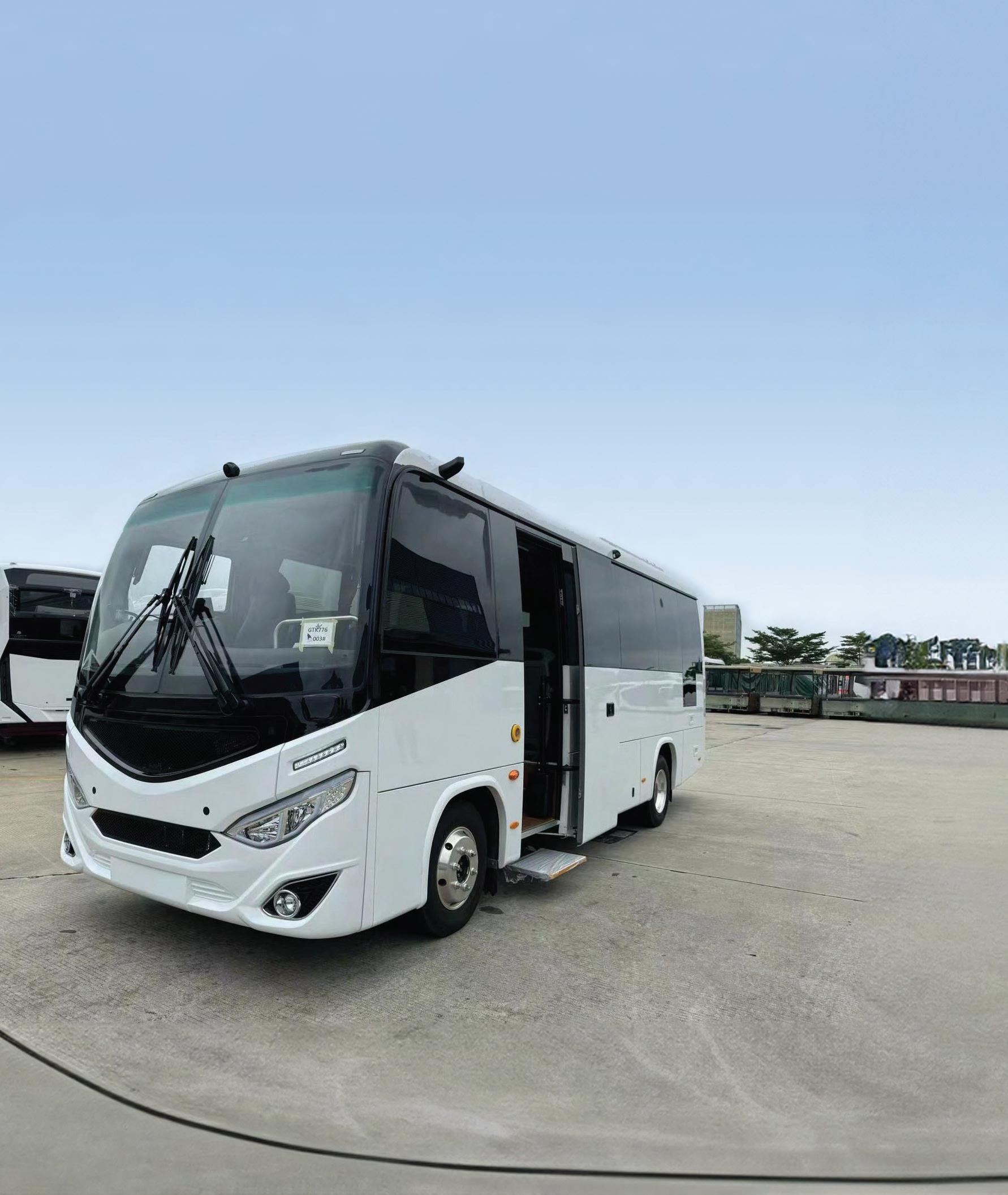



A new collaboration between the WomenCAN charity and Dyson Group aims to encourage more women to take on bus driving
The WomenCAN charity has partnered with Dyson Group to provide comprehensive training programs and mentorship for women wanting to enter the bus industry.
Through the initiative, WomenCAN and Dysons will provide support for women to get their heavy rigid license, payment of all Bus Licence and additional fees, and all the support needed to successfully pass the Dyson Group recruitment process.
Those who apply will also access peer support through WomenCAN’s Placement Circle, which provides a peer supported transition to vocational training and onto employment for women who have disconnected from the workforce.
Above: Dysons Group is throwing its support behind a campaign to increase the number of women driving buses. Image: Monkey Business-stock. adobe.com

Dyson cultural ambassador Lib Dyson says Dysons is grateful to collaborate with such an amazing organisation.
“WomenCAN has left a lasting impression on us, and we highly recommend their services to any employer who wants to be part of a transformative movement,” Dyson says.
“They are making a real difference in the lives of women, and we are honoured to have been a part of their journey.”
WomenCAN Australia was set up in 2019 to help women get skills and jobs, often having been out of the paid workforce for years providing care to others.
The selection criteria for the programs are:
Growing patronage and a successful four-year trial have seen a three-year contract awarded for a popular NSW route
Demand has continued to grow for the popular Tumut to Wagga Wagga and Wyangala to Canberra bus services to become a permanent route, with answers finally given by the NSW government.
Following an extensive four-year trial, the Tumut to Wagga Wagga service operated by Goodes Coaches has finally been confirmed as an ongoing service with a three-year contract put in place.
Patronage for this service, which also has stops at Adelong and Tarcutta and connects with NSW TrainLink services at Wagga Wagga Station, has grown after the addition of a new
service on Saturdays in addition to the original Wednesday service.
More people have been opting to catch the bus to access healthcare, education, employment and social opportunities.
“The success of the trial shows that the Tumut-Wagga bus service is greatly valued as an important link between the Snowy Valleys and Wagga, allowing passengers to easily access services, shops, transport links and other facilities,” independent member for Wagga Wagga Joe McGirr says.
“The confirmation that the service is locked in for the next three years
• Women with interest in working in bus transport with ability to travel to Bundoora, Reservoir or Shepparton Depots in Victoria
• Women from migrant/refugee backgrounds are encouraged to apply
• Hold full Australian Drivers licence for at least 24 months with good driving track record
• Have Australian Work Rights (Temporary Visas Included)
• Willingness to obtain Working With Children Check (WWCC), police check and ability to pass medical assessment
To learn more, see www.womencanaustralia.org/bus-driver-opportunity/
is great economic and social news for communities along the route and provides certainty to passengers who can continue to travel to and from Wagga safely, reliably and affordably.”
The trial Wyangala to Canberra service operated by LiveBetter Services which runs each Friday has also been extended for another year.
Bookings for this service, travelling via Darby Falls, Cowra, Koorawatha, Bendick Murrell, Murringo, Boorowa have grown strongly following a targeted information campaign.
“These services are giving isolated country communities the opportunity to better connect with regional centres for essential healthcare, education, employment and social opportunities,” transport minister Jenny Aitchison says.
“They’re also providing people with better connections with other modes of transport to travel to Sydney and other major cities.”
Western Sydney commuters will soon be riding around in better buses, more often, as the NSW government has allocated $139.5 million to the state’s bus network to modernise the fleet and create more reliable, accessible services.
year, will see upgrades to 4000 Opal-enabled buses in Greater Sydney and another 1000 in outer metropolitan areas.
modern passenger communications including on-board screens and audio announcements – which have been tested in the Northern Beaches – so commuters know which stop they are at and where to get off.
‘ghost buses’ by further replacing old technology to provide passengers with live, accurate information about when the next service is coming.
they’re the cornerstone of a thriving, interconnected and reliable public transport network,” transport minister Jo Haylen says.
with buses since coming to government but there’s still more to do – and that’s what this investment will begin to deliver, especially for communities in our growing West.”

Founded in 1995, BYD is a global high-tech company with a vision of Technological Innovations for a Better Life
These upgrades will be the largest coordinated overhaul in NSW history, with premier Chris Minns saying it will make a major difference to passengers across NSW.
With more than 28 years of accelerated growth, BYD is a company driven by the future.
“This vital investment into our bus network means Western Sydney has greater access to services than ever before,” Minns says.
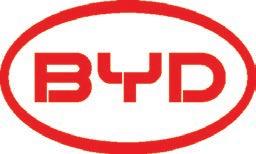
BYD has played a significant role in sustainable mobility from automotive, rail transit to renewable energy and electronics.
BYD Commercial Vehicles commenced in 2008. As an essential part of BYD's four major industries, it focuses on the technology R&D, application and promotion of Commercial Electric Vehicles.
“These are modest upgrades that will make a major difference to passengers across NSW, while continuing our transition to net zero public transport and driving local jobs and manufacturing in the emission-free bus sector.”
BYD Commercial Vehicles has developed a complete industrial chain of New Energy Commercial Vehicle products including planning, R&D, manufacturing, commercial sales and after sales customer service.
BYD has continued to transform the global New Energy Commercial Vehicle Industry with its leading new energy technology, commitment to sustainability, intelligent performance, and innovative design.
The 2024-25 Budget will also inject $24.7 million over 4 years for more services, new routes and more Zero Emission Buses (ZEBs) in Western Sydney which will create opportunities for local manufacturers.
For further information please contact Jon Tozer on 0407 048 097 or jon.tozer@byd.com
BYD New Energy Vehicles has been sold in more than 400 cities, in over 70 countries, and across six continents worldwide. www.bydglobal.com/en/CommercialVehicle.html
Key suburbs to receive critical
Recognising the history of Australia’s original inhabitants was part of
Bus operator Busways launched its first ever Reconciliation Action Plan (RAP) at its Blacktown Depot at the end of June, with an event described as being a “day of celebration and reflection”.
“Yesterday we had the privilege to launch Busways first Reconciliation Action Plan outlining the concrete steps we will be taking to contribute to the national effort for reconciliation between Indigenous and non-Indigenous Australians,” Busways says on its LinkedIn page.
“The launch at our Blacktown Depot was both a day of celebration and reflection. Employees gathered to acknowledge the Traditional Custodians of the lands on which we operate our bus services.”
The day began with an Acknowledgement of Country and smoking
ceremony performed by 103-year-old Biduginbul elder Uncle Wes. Uncle Wes is a storyteller, activist and poet who has spent the last 47 years sharing traditional knowledge and personal experiences from living on Dharug lands in Western Sydney for decades.
Proud Boorooberongal clan woman and Aboriginal artist Melissa Barton created an artwork to celebrate the launch of the RAP titled ‘Muru Dharug Gnurra’ or ‘Journeys over Dharug Country.’ Barton’s artwork will be featured on the livery of one of Busways’ Blacktown buses.
“Busways is actively working to increase Aboriginal and/or Torres Strait Islander workforce representation and economic participation through partnerships with Indigenous-owned businesses,” Busways stated.
“Building on our existing projects and
Above:
Busways recently held a da celebraton at its Blacktown Depot to launch its inaugural Reconciliation Action Plan.
Image: Busways
partnerships, we are proud to formalise our journey towards reconciliation with the introduction of Busways’ Reflect Reconciliation Action Plan.
“This is an opportunity for all of us to learn about the stories, traditions, and cultures of Aboriginal and Torres Strait Islander peoples.
“Through the RAP framework and the establishment of Busways’ Reconciliation Action Working Group, we will work together to achieve our objectives and contribute to better outcomes for Indigenous Australians, who are our colleagues, clients, customers, commercial and community partners, and stakeholders.”

The National Heavy Vehicle Regulator (NHVR) will be undertaking random mechanical inspections of thousands of trucks, buses, and other special purpose vehicles until the end of September.
Undertaken as part of the regulator’s 2024 National Roadworthiness Survey (NRS), roadside and fixed inspection sites and depots began appearing across the country from the start of July.
The NHVR says the roadworthy inspections take an average of 45 minutes to complete and will include a detailed visual inspection and

mechanical component testing via vehicle inspection equipment that is based on the National Heavy Vehicle Inspection Manual.
The inspection of buses, coaches and SPVs will predominantly be scheduled at depots.
“The survey will provide a point-in-time snapshot of the mechanical condition of Australia’s heavy vehicle fleet so that we can identify current issues and help us create a nationally consistent inspection policy,” the NHVR says.
“The vehicles will be selected for inspection on a random basis using a method recommended by a statistician and inspections will be performed in a consistent manner nationally.
“Specific operators, industries or drivers are not being targeted.”
While the NHVR is only active in
NSW, ACT, QLD, SA, TAS and VIC, all Australian state and territories are involved in NRS 2024, including Western Australia and Northern Territory.
“We have tried to minimise disruption to industry in the way we designed the survey, but drivers must still comply with fatigue laws and all other HVNL requirements,” the NHVR says.
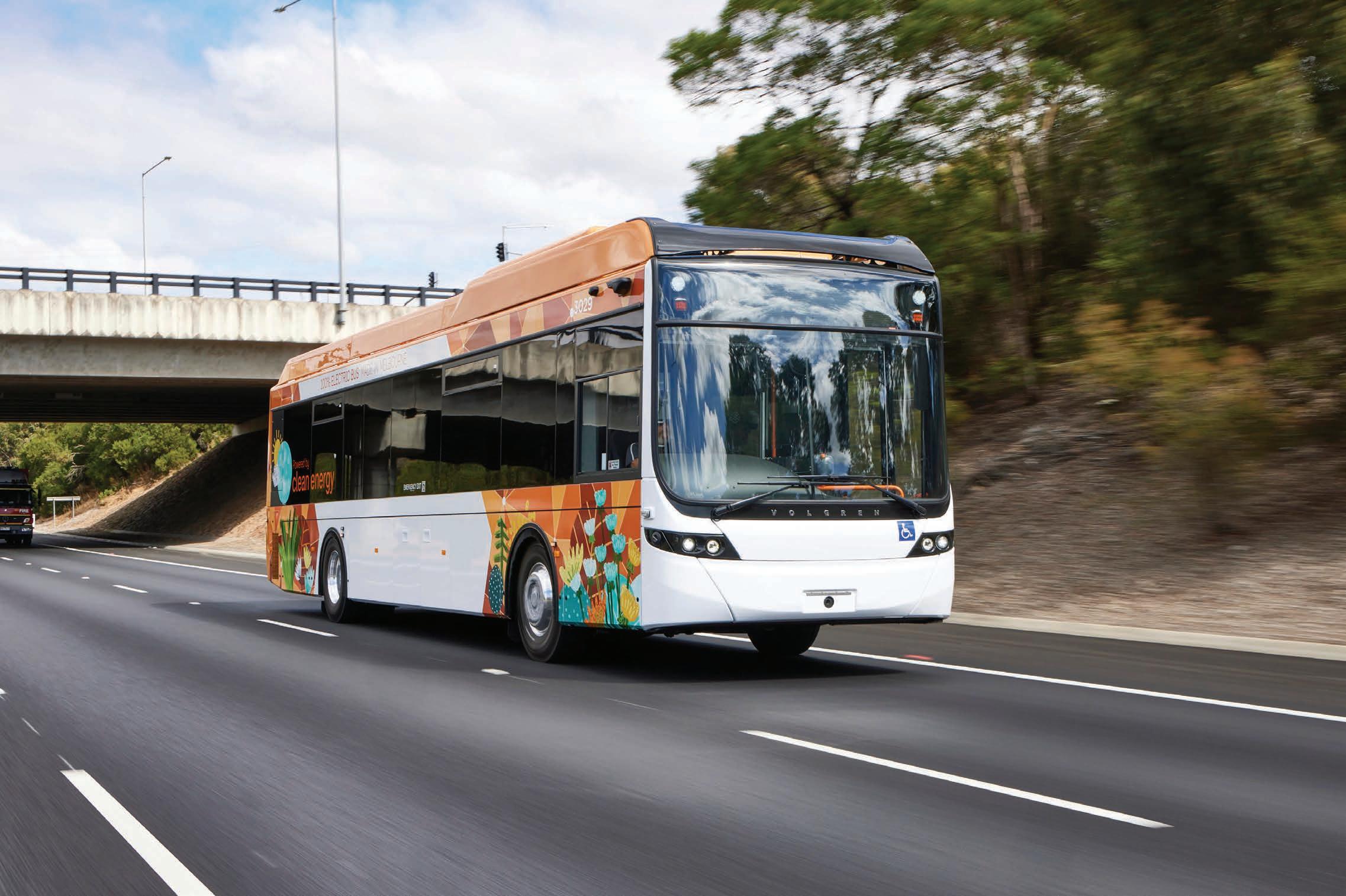
A report outlining the key findings of the survey will be published in early 2025.
“We want the data to be as representative as possible of the condition of the Australian heavy vehicle fleet,” the NHVR says.
“The data collected will be used to inform policy and develop projects to reduce the social, environmental and economic harm from unroadworthy heavy vehicles.”


At Volgren, we are dedicated to providing innovative, sustainable, and reliable transport solutions. Our buses are renowned for their reliability, undergoing rigorous quality control to ensure exceptional performance and longevity.
When you buy a Volgren, you’re not simply buying a bus, but the trust that you are getting a cutting-edge technology product, effective service and product support, and the certainty that all promises made will be delivered.
As we celebrate our 45th anniversary this year, we thank all of our people, amazing customers, and business partners. You are the reason for Volgren’s existence, and we thank you for being part of this amazing journey with us.

Stay tuned to know the newest additions to our Zero Emission Bus portfolio. Visit us: www.volgren.com.au
@volgrenaustralia
Two new appointments at Hispacold Asia Pacific showcase the brand’s commitment to innovation and its customers.
Air-conditioning and HVAC company
Hispacold has appointed two new staff members in an effort to drive the brand’s momentum in Australia. With a growth plan for their HVAC and air purification systems, the newest hires will focus on ensuring clients receive a high-quality experience, ranging from product to sales.
With decades of varied experience up their sleeves, the duo plan to highlight the European-made Hispacold range by giving coaches on the road the cleanest air all year round.
In his new role as business development manager, Sean van Dijk will be connecting with customers, service technicians, management teams and more to realise the potential of the Hispacold business.
Like many in the industry, Sean’s career began on the tools as a motor mechanic before moving into management roles within the automotive industry. These experiences saw him encompassing dealer management, and working on
equipment and access gear, a sector in which Hispacold also has a strong presence. Sean says he is looking forward to a new challenge with the bus industry and supporting the brand throughout the dealer network.
“I’m excited to increase and solidify the dealer network and develop relationships with OEMs and body builders to strengthen Hispacold’s reputation further,” he says.
“Managing supply and dealer contracts is the paperwork, but the relationships and service are what underpin success.”
Hispacold has over 40 years of leadership and operates in more than 100 countries across five continents. With a new factory based in Melbourne, the Asia Pacific team is confident it has the network, expertise and inventory to be the reliable supplier for all coaches in the region, whether their units are installed with the bus build or retrofitted.
That confidence is bolstered by the appointment of Troy Hewlitt in the role of aftersales service manager. A heavy
Above: Troy Hewlitt will be taking char as the aftersales service manager at Hispacold

Below: Hispacold’s ne development manager Sean van Dijk
Images:

expertise and assistance for Hispacold’s performance on the road, Troy will be coordinating a strong team of service agents and field service technicians. He’ll be on hand assisting in aftersales and warranty coordination, always focusing on the customer experience through any challenges.
With his technical strengths and the resources of the global manufacturing base in Europe, Troy says, “I’m excited to develop the training procedures for technicians that keep our team at the forefront of technology and optimise the functional operation of the Hispacold products.”
“That’s where we can ensure our customers get the most out of their partnership with the brand.”
The two newest employees are urging people to keep an eye on the European brand, with more innovations and plans in the works.










Tranzit Group’s bus 3401 might look like it always has but underneath the skin its old diesel engine is gone and a new electric motor is powering its future
Tranzit Group’s second successful “repower” bus or 3401 – a single deck electric bus that was successfully converted from diesel to 100 per cent electric – is now delivering services on Metlink’s bus network in Wellington.
The innovative bus was built to show that repowered electric buses are a viable public transport option that can assist the country in reducing emissions from land transport.
Repowered buses are an extension of transitioning to a zero-emissions bus fleet and can also solve three problems at once, according to Tranzit’s director of transport and operations Keven Snelgrove.
“Our two repower buses provide an alternative way for New Zealand to meet its public transport decarbonisation targets on time, alongside building brand new, while addressing the issue of how to transition relatively new diesel bus fleets to electric so that operators are not left with stranded assets,” Snelgrove says.
“In addition, to having zero tailpipe or scope 1 emissions, a repower bus can mitigate scope 2 or indirect emissions that result from building brand new.”
The bus is the second successful converted vehicle, the number one bus was completed in 2021 in a Southern Hemisphere first.
“It’s great a second repower bus is in service. Metlink is aiming for all core bus routes to be electric-only by 2030 and for the complete decarbonisation of our bus fleet by 2035,” Metlink group manager Samantha Gain says.
The conversion was done by Tranzit’s Masterton based workshop team, removing a Cummins Euro 6 engine from the single deck urban bus and replacing it with 10 batteries that have a combined 350kwh.
These were placed in bespoke framing and brackets build by Tranzit’s engineers, and a fully electric air conditioning system was installed and is located on the top of the vehicle.
Tranzit’s team, who were involved in the first repower, spent weeks testing the vehicle including electrical signals that once came from the body, suspension and brake computers, but now come from the EV powertrain.
An extra challenge faced on this repower, compared to the double deck repower, was fitting the same number of batteries into the same
Above: Tranzit’s team of mechanics and engineers based in Masterton converted a single deck diesel bus to 100 per cent electric.
Image: Mike Heydon/JET Productions
Below: Tranzit’s second “repower” bus, pictured in Masterton, is now back delivering services on Wellington’s Metlink network
Image: Tranzit Group
space at the rear of the bus.
“You can certainly tell just by looking into the engine bay, that all the batteries are precisely positioned in their purpose-built framing and thanks to the reduced space are pretty snug, however we are really happy with what the testing showed us about its performance,” Tranzit’s Masterton workshop manager Gareth Price says.
“Our first repower bus, which was a Southern Hemisphere first innovation, took around six months in total but allowed us to develop a blueprint for further repowers which proved invaluable on this one.


The New Zealand government is set to invest more into its public transport services and operations than ever, it announced this week.
A record 41 per cent of additional funding compared to the period between 2021 to 2024 will be put toward bus and train services, transport minister Simeon Brown says.
“This government is committed to supporting public transport to provide more travel choices for New Zealanders,” he says.
“The NZ Transport Agency (NZTA) Board has confirmed indicative funding from the National Land Transport Fund for public transport services and operations will increase by 41 per cent compared to funding
allocated between 2021 and 2024.
“This is a record investment in public transport services and operations to deliver reliable services to commuters across the country.”
This funding will also include the rollout of the National Ticketing Solution (NTS) that will enable contactless debit and credit card payments starting this year in Auckland, before expanding to Timaru in December 2024, Christchurch in early 2025, and all other regions by the end of 2026.
Brown says this will make accessing and using public transport significantly easier for all New Zealanders.
“In addition to record investment, the rollout of contactless debit and

Above:
Funding for public ansport services and operations will increase by 41 per cent.
Image: Chris/stock. adobe.com
credit card payments for public transport users through the NTS will make public transport services more convenient, easier to use, and deliver a consistent experience no matter where Kiwis are or what service they are using,” he says.
“This solution will enable the public to choose the payment method that works best for them. This includes contactless debit or credit cards, as well as digital payment methods like Apple Pay and Google Pay on mobile phones and smart watches, while still having the option of a pre-paid transit card.
“These methods are common elsewhere around the world, and it’s time New Zealanders had access to the same standard of service.”
This will see all of New Zealand operating under one National Ticketing System to make public transport more accessible to all New Zealanders.
“Local councils and transport operators will be able to monitor demand and rollout the right vehicles, at the right time and frequency, to deliver the most cost-effective services possible,” Brown says.
“Our government is committed to investing in reliable public transport services and technology so that local councils can deliver the services New Zealanders need.”



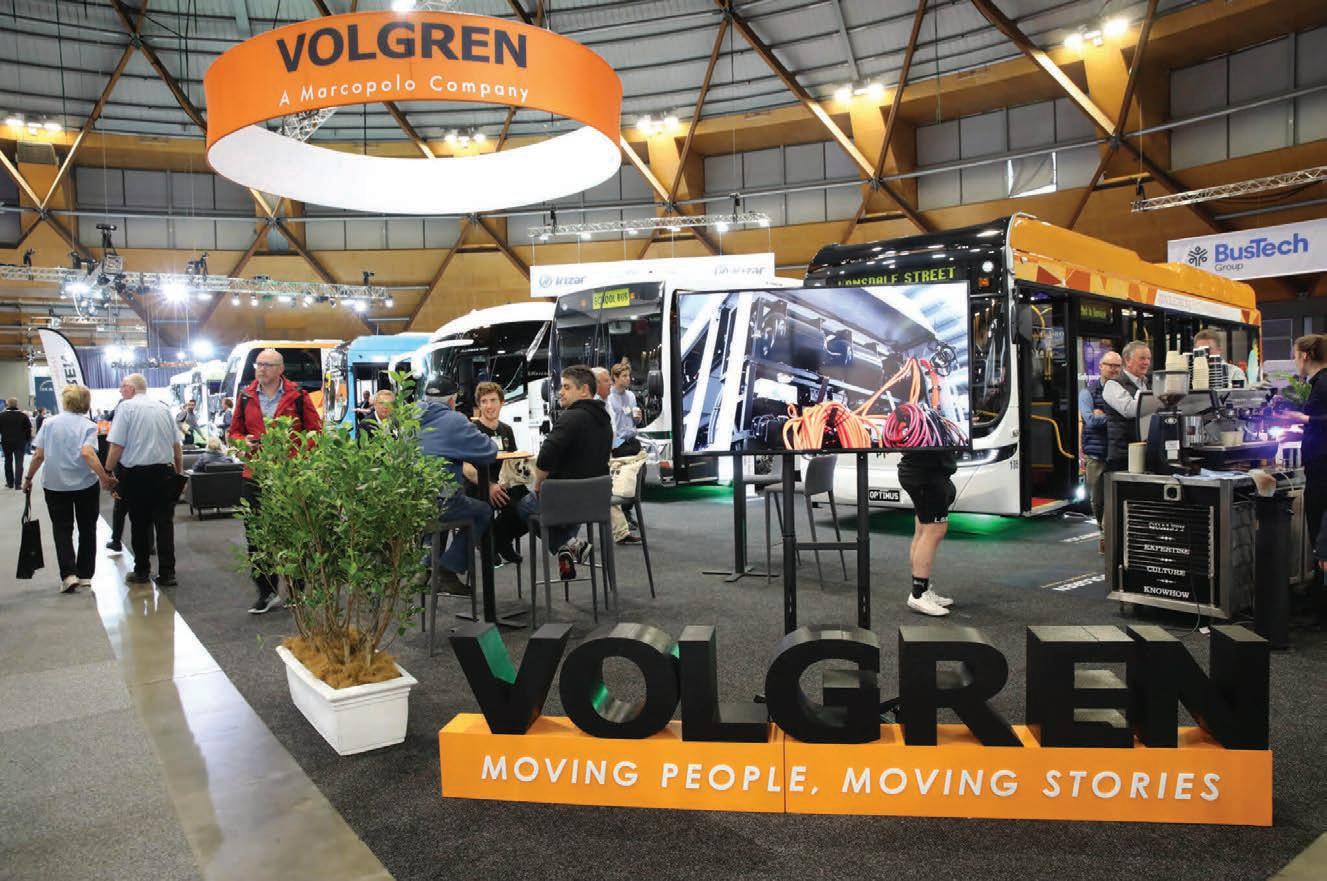

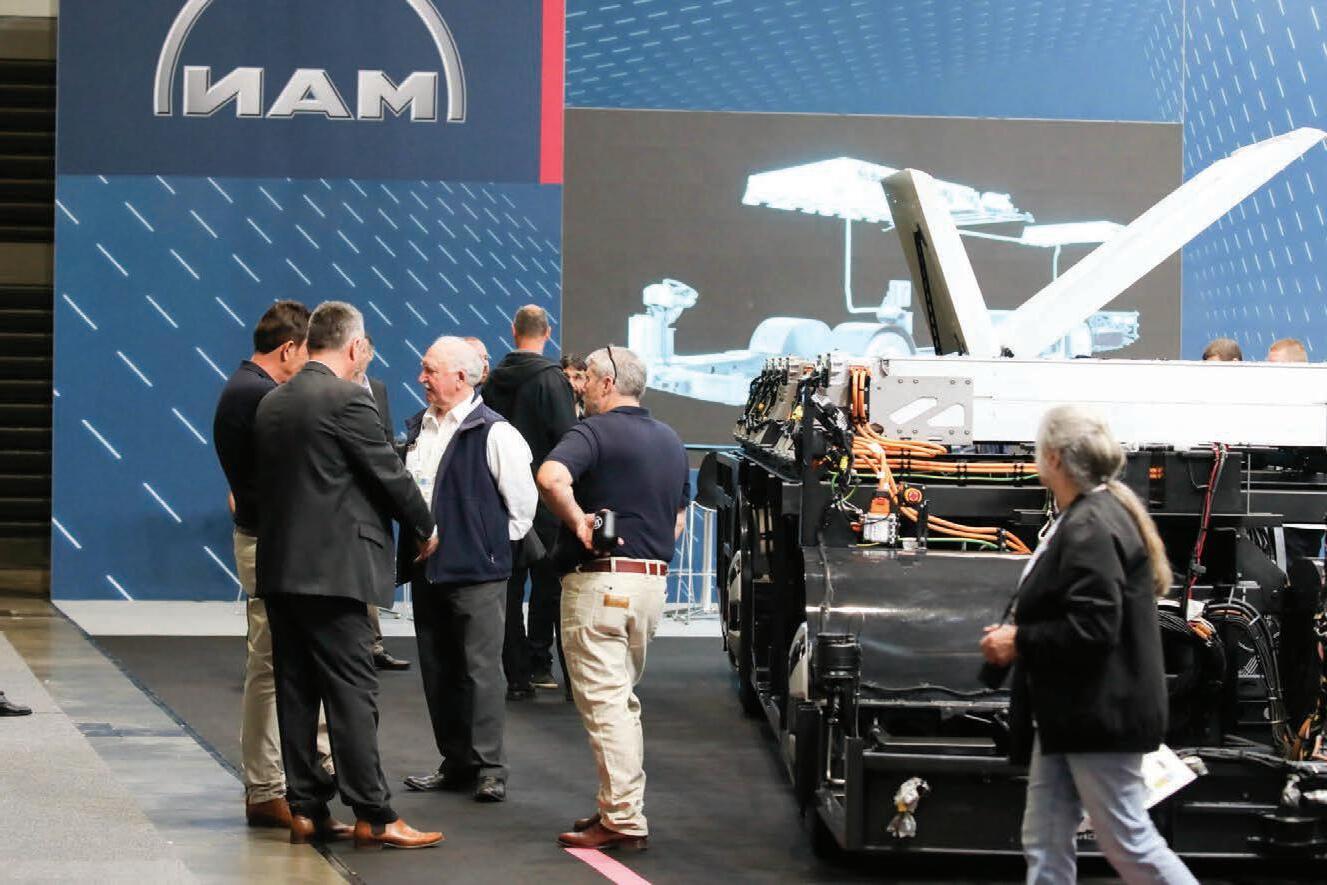
Bussed a move to Brisbane this September
Bussies, enthusiasts and professionals will converge on Brisbane from 17 to 18 September for 2024's National Bus and Coach Show.
Whether you're on the driving end of a bus or just a lover of public transport, DON’T miss your chance to mingle with bus and coach’s finest.
Come for the expo, featuring all things trending in zero emissions, energy and infrastructure, see the vintage and autonomous buses, and talk shop at one of the toolbox and tech talks.




The Bus Industry Confederation and a host of government and industry partners have put the safety of school children on buses firmly on the agenda
Did you know that there are over 4,000 school bus routes in operation across Australia? With tens of millions of boardings every year, buses are still classed as one of the safest ways to get around. But, even with the best provisions and intentions, mishaps can still occur, which is why teaching our children about practicing safe habits on and around buses at an early age will set them up into adulthood.
Working with the government, the National Heavy Vehicle Regulator (NHVR) and other industry bodies, the Bus Industry Confederation has helped implement a number of initiatives that have gone towards improving road rules, infrastructure and bus travel safety – not just for passengers, but other vehicles and drivers too.
Every year, Road Safety Week reminds us about what we should and shouldn’t be doing around buses. The ‘Be Bus Aware’ initiative by the NSW Government is made up of a series of videos focussing on bus safety for all road users, from walkers and riders to drivers and those travelling on buses. Buses are big… they are heavy, and they naturally can longer to stop. Road users were reminded to give buses enough space and to be especially cautious around their blind spots. In the same way, the NHVR’s
‘We All Need Space’ campaign, prompted us about how sharing (the road with buses) is caring. After all, giving way to a bus isn’t just polite –it’s actually the law.
This year, a Bus Safety Working Group was established by the Department of Infrastructure, Transport, Regional Development, Communications and the Arts (DITRDCA) to further progress regulatory safety. The Group’s authority stretches across a broad range of issues gradually being reviewed, such as standardising bus door safety, updating bus driver safety screens, and improving seatbelt requirements, signage and usage reminders.
The Rural and Regional Bus Seatbelt Program was recently updated to make sure buses travelling on outer metropolitan roads with higher crash risk ratings were fitted with seatbelts. In 2024, eighty-two dedicated school buses were fitted with seatbelts in the Hunter region of NSW.
School bus passenger safety has always been a top priority for the industry and schools. However, even with the best measures in place, it’s reasonable to expect that risky behaviour at bus pick-up or while on the bus can lead to accidents.
Ninety fatalities involving buses carrying school-aged children occurred between 1989 and 2020.
Above:
The bus industry’s BusSAFE initiative works to prevent incidents and loss of life via bus safety education sessions. Image: Cavan for Adobe/stock. adobe.com
Half of these were caused by people outside of vehicles, like pedestrians and cyclists. Every year in Australia, around 254 bus passengers are hospitalised due to crashes.* And for every reported accident, thousands more near-misses go unreported.
The bus industry’s BusSAFE initiative works to prevent incidents and loss of life via bus safety education sessions across South Australian, Queensland and Tasmanian schools.
BusSAFE teaches children how their behaviour directly impacts their safety in and around buses.
The fun, interactive presentations are delivered by trained instructors and are aligned to the Australian Curriculum (HPE, D&T) for years foundation/kindergarten to 9.
Sessions take 50 minutes to an hour and include a series of videos, role play and in-class discussions.
Currently free to rural or regional public-school students, BusSAFE sessions have been delivered to 5000 students a year in South Australia since 2022.
The program will be rolled out to schools in Tasmania and Queensland from 2024-25 via a Heavy Vehicle Safety Initiative trial, with the aim of expanding across the nation following the trial.
Learn more about BusSAFE at www.bussa.asn.au/bussafe — get involved to help keep our kids and all passengers safe.
Celebrating its 45th year, Volgren takes pride in looking back on the extraordinary path that has led the company to this significant milestone
WORDS TIARNA CONDREN IMAGES VOLGREN
Since its inception as a division of Grenda’s Bus Services, and its first bus delivery in 1979, Volgren has been dedicated to redefining the standards of bus manufacturing in Australia.
While the late 70`s partnership between Volvo and Grenda Bus Services saw the beginnings of what we now know as Volgren, the company’s history actually stretches back to 1945. It was then that George
Grenda took a brave step by leaving behind his milk carrying business and made his first venture into the bus industry, purchasing four routes and six vehicles. While bell-bottoms, corduroy and disco plagued the minds of locals at the time, the people behind Grenda had their hearts set on building new buses.
Volgren’s journey began in the 70’s when it commenced operations as a body repair business. Recognising the potential for growth, Volgren
Below: Volgren BZL Electric buses successfully delivering cleaner transport to Perth. Image: WA Government

quickly expanded its horizons, becoming the distributor for Volvo Bus chassis in Victoria and southern New South Wales.
“It started when Volvo asked Grenda to become its chassis distributor in Victoria and southern New South Wales.” Volgren`s CEO, Thiago Deiro, told ABC.
“And that is how Volgren was born,” Deiro says. “The name Volgren, is inspired by this partnership. It takes the first half from Volvo, and the

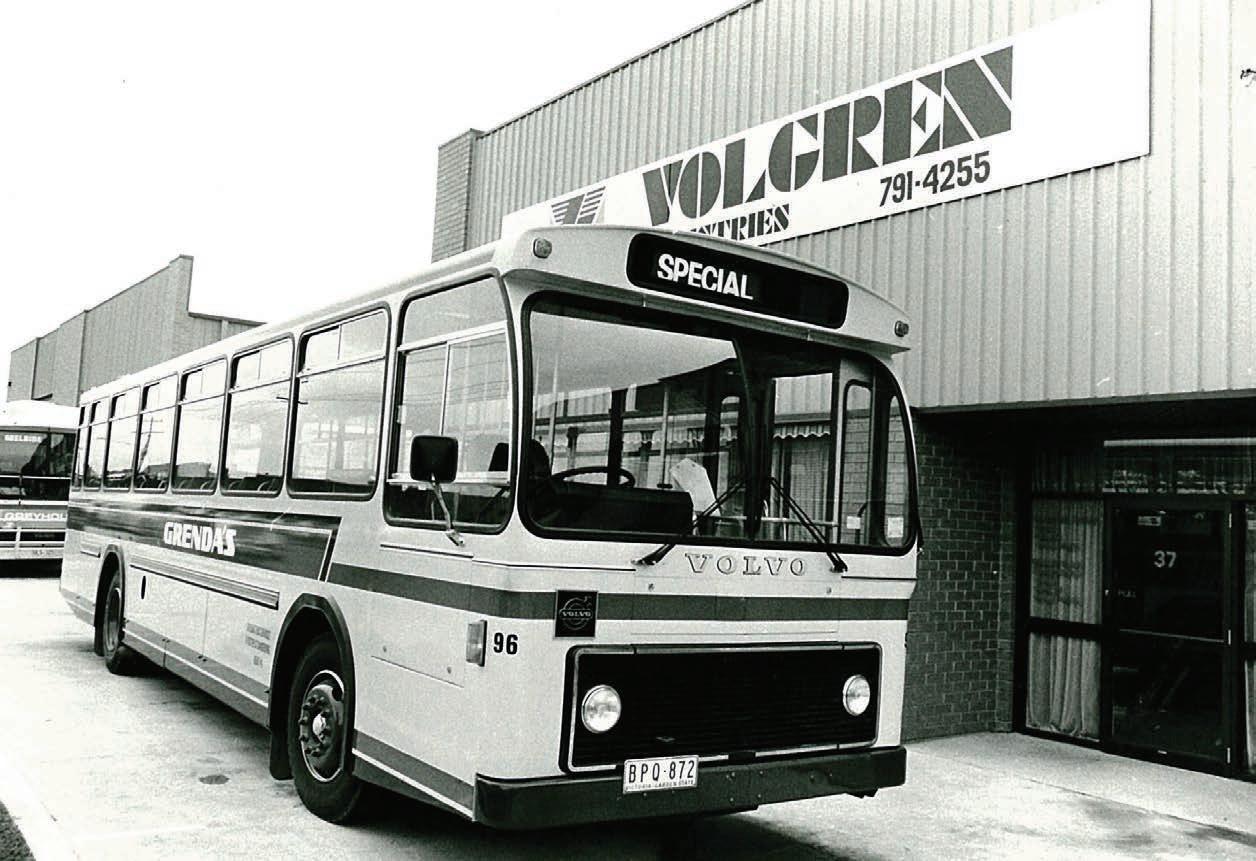
second half from the Grenda name.”
This marked the beginning of a journey that would see Volgren evolve into an industry leader known for its high-quality products and engineering excellence. It was during this formative period that Volgren solidified their partnership with Volvo Bus, a collaboration that Mitchell Peden, VP of Volvo Bus Australia, describes as unparalleled in strength and success. “There has been no stronger partner in Australia for Volvo Bus than Volgren,” Peden emphasises.
The new relationship also brought about a second affiliation –with the Swiss company Hess, a pioneer Bus Manufacturer who started operations in 1882 and engineered the bus body building aluminium technology, today known as `CO-BOLT®`. With all the pieces in place, Volgren built their first bus, over the top of a B58 mid-engine Volvo Chassis, in 1979.
Hess’ CEO, Alex Naef, highlighted the collaboration’s significance,
stating, “The partnership with Volgren has enabled Hess’ expertise to gain a foothold in Australia.” This move not only advanced Volgren’s manufacturing capabilities but also set a new benchmark for the industry. According to Hess’ CEO, the introduction of the aluminium bus bodies “signalled a step change for the Australian industry,” offering a durable, lightweight solution that reduced downtime and repair needs.
Reflecting on this era of innovation since Volgren`s first bus in 1979, and the broader journey of Volgren, Geoff Grenda shared, “I am very proud of Volgren’s achievements. For the company to have gone from making a few buses a year for internal use to being a market leader is something that everyone who works there or who has worked there can be very proud of.” Geoff further highlighted the forward-thinking attitude that has defined Volgren’s approach: “We had a lot of firsts in the marketplace.
Above:
Back when Grenda’s buses roamed the streets of Melbourne
Below:
From then to now - the evolution of Volgren’s bodies
Vehicles we pioneered are now the norm.”
Intent on solidifying its reputation for innovation and quality, Volgren continued to evolve and grow its

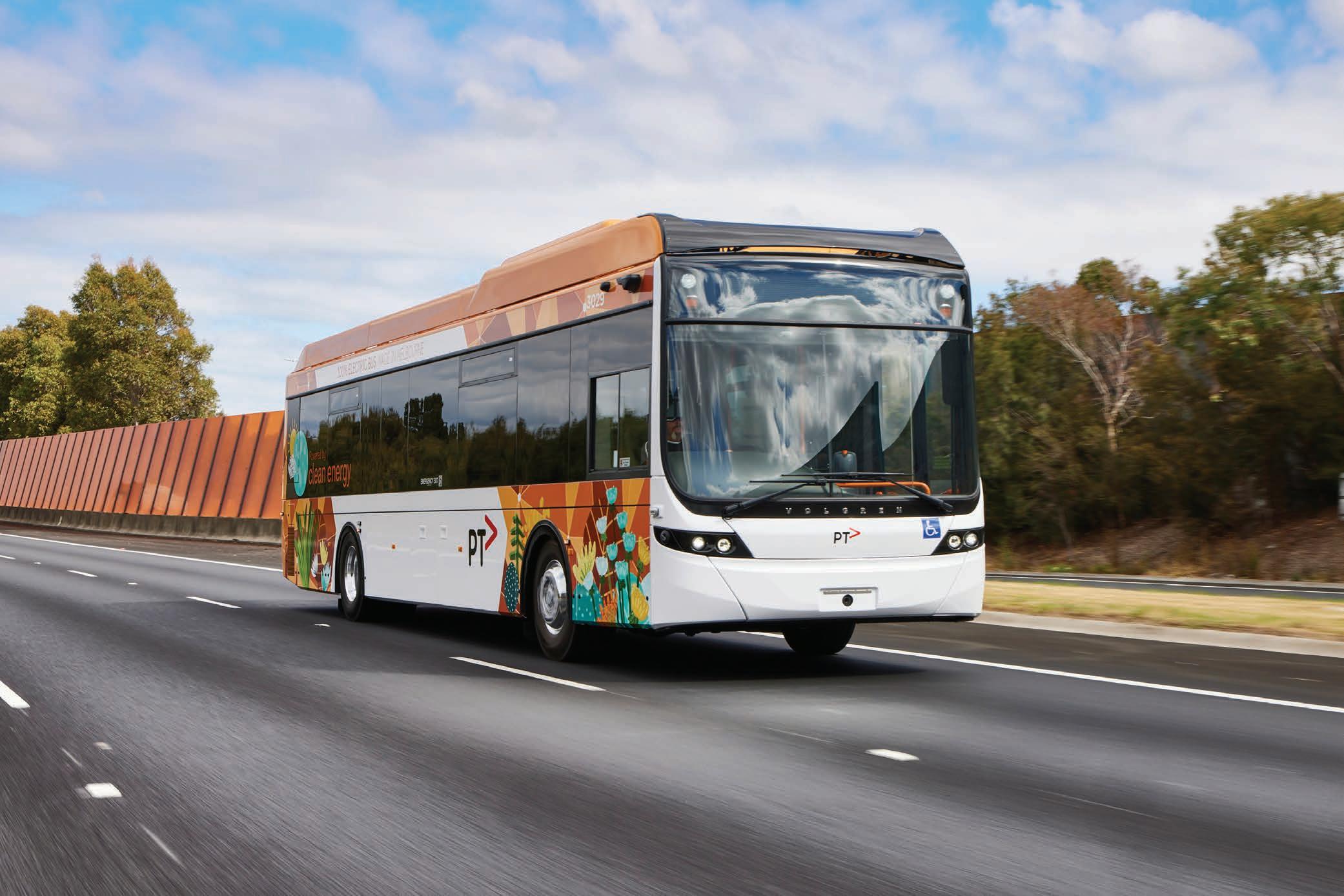
we delivered our 1000th bus,” Deiro says.
“Then only one year later, in 2000,
Above: One of the electric vehicles sold to Kinetic
Below: Stripping it back to basics
Volgren’s CEO highlighted the significance of this alliance, stating, “our strategic partnership with
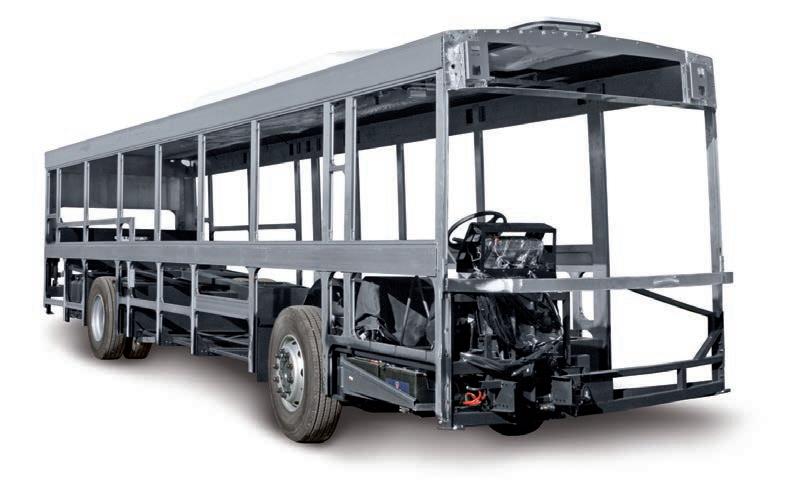
solutions while remaining deeply committed to our Australian roots. “This partnership has enabled us to stay ahead of the curve in the industry’s evolution by combining our strengths and expertise to innovate, diversify our product offerings, and provide cutting-edge solutions to our customers.”
Andre Armaganijan, the CEO of the 75-year-old company, Marcopolo S.A, shares his insight on the collaboration between the two companies: “The relationship between Marcopolo and Volgren represents a powerful synergy of global vision and local excellence. With Marcopolo’s support, Volgren has access to a wealth of international knowledge, technology, and resources, enabling them to push the boundaries of what’s

improvement, innovation, and a dedication to delivering unparalleled value to our customers and the communities they serve.”
Volgren has spent the recent years turning its focus to the future of the transport industry, providing zero-emissions options to build on its technological capabilities in 2024 and beyond.
Volgren has been carefully planning the transition to zero-emission buses, first with its hybrid bus bodies, and then with its Electric Optimus bus in 2019. Now, Volgren will have more than 150 zero-emissions buses on Australian roads by the end of 2024, including its first ever Hydrogen Buses, with Deiro saying it has been a smooth transition.
“Building the first Electric Bus in
time, at a similar pace.
“Going into the initial manufacturing was probably daunting before we knew more about it. But nowadays, we just take it as business as usual.”
Despite finding national success, Volgren’s values have remained the same since its inception, focusing on satisfying our customers whilst remaining a local manufacturer, Deiro says.
“The core of Volgren is to be a local manufacturer. While Marcopolo currently exports to over 100 different countries, we wanted to ensure that the focus of local bodybuilding was maintained.”
“That thinking is really valued by our customers, business partners, and the government. We build our entire business around that and
investing and expanding our local manufacturing facilities.”
Throughout the next phase of the company’s evolution, Deiro’s goal is to ensure that Volgren continues to surprise its customers and grow with the latest technological developments.
“Volgren will keep a high focus on innovation. The business environment has changed; it has become more competitive than ever. Still, we are confident that we will keep our market leader position by providing innovative and sustainable solutions to our customers and business partners”, he says.
“A lot of investment is going into research and development so we can continue to engineer new and better solutions”, Deiro says.
“We’re working on ways to increase our product efficiency even more, knowing that this is a key attribute in the Zero-Emission transport segment.”



“Our other focus is diversification. We’re looking into bringing new products to Australia. We’re the main player on the city bus segment, but we see a lot of opportunity on the school bus, charter and coach markets”, Volgren’s CCO, Yuri Tessari, says.
“We are currently working with Marcopolo’s Head Office to bring our new coach generation – called G8 – to Australia. The G8 is a market leader product in Brazil and mainly all Latin American markets. This Bus will be a game changer to Australian operators and is set to arrive in early 2025”.
Besides celebrating 45 years, Volgren is also celebrating the 25th anniversary of Volgren WA (Perth) and the 15th anniversary of Volgren QLD (Brisbane), reinforcing the company’s legacy and commitment to local employment, the circular economy, and Australian manufacturing.
For many people, an anniversary celebration would involve some type of cake or present. Volgren however will be celebrating with the launch of three new products at the Bus Expo in September in Brisbane and other major milestones.
The Volgren team will be showing three brand new Zero Emission buses,
Volgren`s ZEB portfolio even more. New partnerships will be also launched at the Bus Expo.
“We will continue to put our best foot forward and strive to keep innovating and providing the best solutions for operators in Australia”, Tessari says.
Volgren is also celebrating the amazing milestone of producing and delivering its 10,000th bus later this year. “Through our three manufacturing facilities in Melbourne, Brisbane, and Perth, we are delivering more than 600 buses in 2024, one of them being our 10,000th bus, which is an extremely proud moment for all of us at Volgren,” Deiro says.
When asked about the future, Deiro highlights the continuous focus on enhancing Volgren’s local content levels and the investment in expanding Volgren’s operations across the country.
“Our teams are actively working to expand Volgren’s footprint across Australia and increase our capacity even more, giving our customers and government authorities the certainty that Volgren, as the main bus manufacturer in Australia, will produce and deliver buses according to the high expected volumes of Zero
Emission buses in demand for the coming years.”
Contemplating on the evolution of Volgren’s products, Geoff Grenda observed, “I get to travel on buses we made 25 years ago and on the electric buses that are currently being rolled out of the factory. The changes in technology are amazing, and I think that’s where Volgren has always been ahead of the field and where it continues to lead today.”
Reflecting on the path forward, Thiago Deiro articulates a clear vision: “As we celebrate our 45th anniversary, I envision a future for Volgren defined by continued growth, innovation, and sustainability. We will build upon our rich legacy of excellence by embracing emerging technologies, fostering strategic partnerships, and investing in our people and processes. Our commitment to delivering superior products and exceeding customer expectations will remain unwavering as we navigate new opportunities and challenges in the dynamic landscape of bus manufacturing. With a focus on innovation, customer satisfaction, and sustainability, I am confident that Volgren will continue to lead the way in shaping the future of public transportation in Australia and beyond.”
Transit Systems have officially filled their recruitment roster well ahead of commencement
Transit Systems has upheld its end of the Southwest Link bargain, recruiting all positions for their component of the Metro conversion project.
With recruitment efforts ramping up in April, Transit Systems have now successfully recruited a full roster of 118 drivers to work on Southwest Link and U-Go Mobility have 20 drivers in training.
Needing 200 drivers for the project, both bus operators are well on their way to hitting recruitment targets.
“Southwest Link will play a crucial part in the integrated transport plan when the Sydenham to Bankstown Metro conversion happens. We will need all the bus drivers we can get

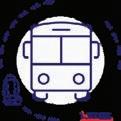

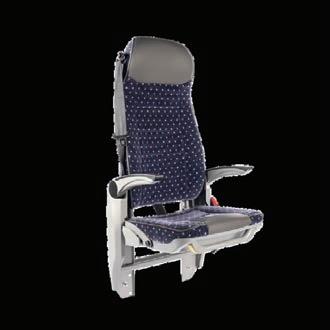
to deliver it and help the community through what will be a really tough 12 months,” transport minister Jo Haylen says.
“It’s great news that Transit Systems’ and U Go’s recruitment campaign has attracted a strong stream of applicants, with dozens of new drivers starting their training each week but we still need more drivers, so if you are looking for a career change now is the perfect opportunity.
“And it won’t be over when we’re finished with Southwest Link. I want as many drivers as possible across NSW to stay in the industry after we get this done so we can help fix the wider bus driver shortage.”
Transit Systems has been running

induction courses every week for new applicants, even flying in drivers from Perth to keep up with increasing interest.
Transit Systems NSW managing director Daniela Fontana says this effort is setting the benchmark for the industry.










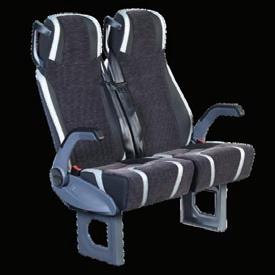




KlineFire is proud to be bringing one of the world’s most advanced vehicle fire suppression systems to the Australian market
Since 1964, KlineFire has had a rich history as a trusted fire protection manufacturer and supplier to the Australian Plumbing industry. As a market leader, KlineFire has stayed in its fire protection lane whilst harnessing its internal knowledge to evolve the business and support the ever-growing market of transportation fire suppression.
With a national footprint spanning over 1,000 clients, it could be hard to believe that the fire protection supplier began by selling extinguishers out of a home garage.
Following a successful run as a
test cricketer, Lindsay Kline decided, in 1964, to swap out the ball for an extinguisher, starting Lindsay Kline Sales from his home in the south-east suburbs of Melbourne.
Before long, momentum had picked up and the home base was upgraded from garage to factory, with the product range expanding into various hydrant and booster assemblies and to its own LKS Fire Hose Reel that supported all major works throughout Australia. Last count, KlineFire has manufactured over 400,000 Hose Reels.
Now, KlineFire – as it was rebranded – specialises in the manufacturing,
Below:
KlineFire’s technology can be used in diesel, hybrid, hydrogen and electric buses
supply and assembly of fire protection equipment to the fire industry and beyond on an Australia-wide scale.
“Approximately 10 years ago, we were successful in obtaining the distributorship rights with Kidde Technologies to support Asia Pacific,” KlineFire business development manager Allan McPhie told ABC.
“Since then, we’ve focused heavily on supporting the growth of the fire suppression market supplying private bus operators and the public transport network all over Australia with the world’s best fire suppression systems,” McPhie says.
A key ingredient in KlineFire’s

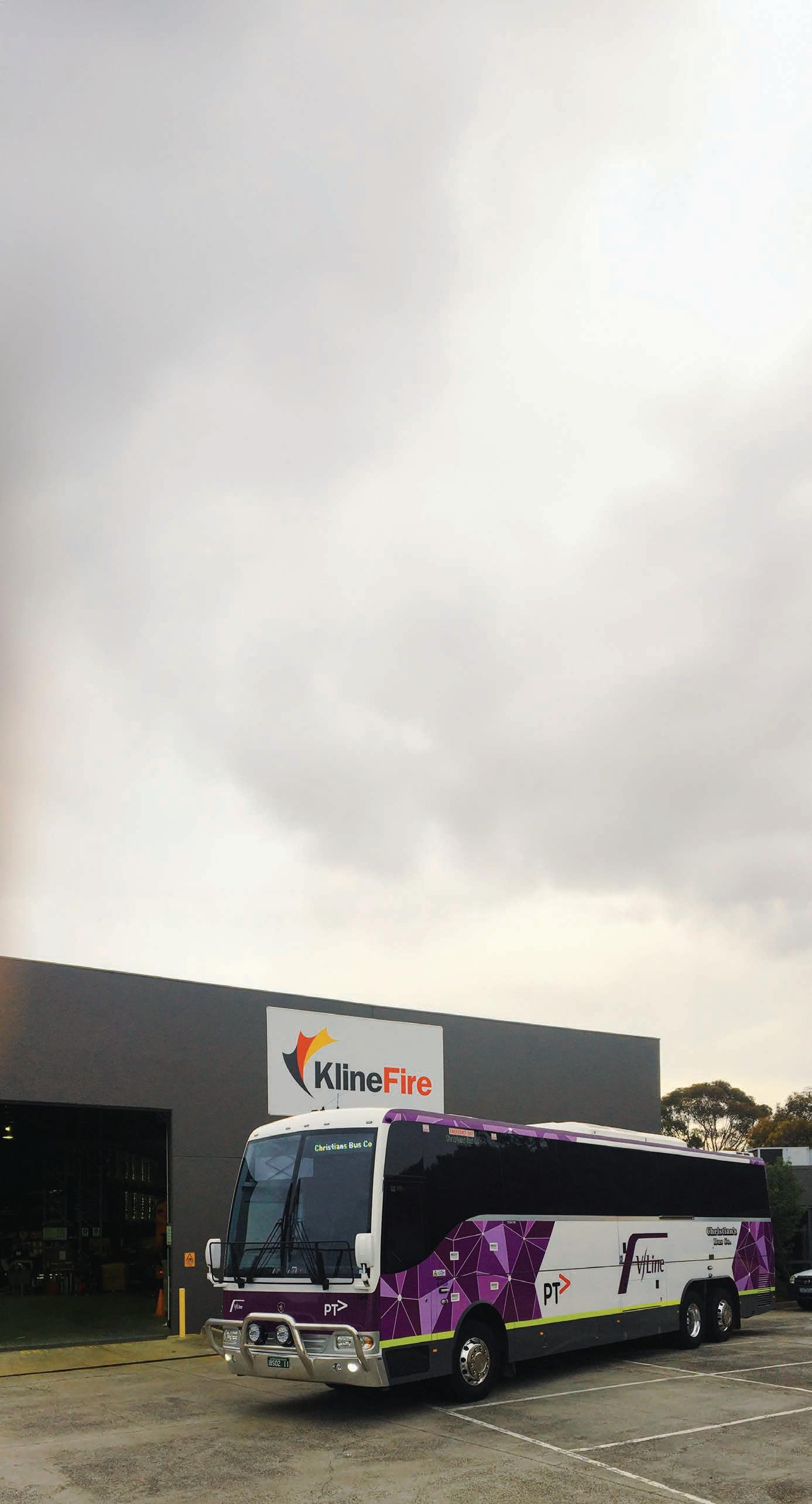

vehicles, bringing forward a new option to operators.
“Our fire suppression varies greatly from others in both the extinguisher and detection components. It’s a dry chemical system that is environmentally friendly, non-corrosive and non-toxic,” McPhie says.
The suppressant system which is regularly used within the Australian military, is a Purple-K dry chemical agent and is highly regarded as a high-performance extinguishing agent that is desired within transport and mining industries due its extinguishing qualities and immediate effectiveness.
Capable of being vacuumed up or blown out, the agent leaves no residue behind, ensuring that componentry remains unharmed, which in turn supports the operators in allowing their buses back on the road with minimal downtime.
Since its relationship with Kidde Technologies, KlineFire has maintained a strong stance on supporting the government regulations, whilst ensuring that AS5062 is not only met but also sets a new level of standard within the Australian market and care for the environment.
“The great thing about our system is its flexibility to suit the ever-changing fuel types within the Australia Market.
suit the different types of hazards that each bus now has,” McPhie says.
“Whilst the extinguishing component is an integral part of the KlineFire system, equally as important is the ability of the supporting detectors to immediately detect a thermal event. KlineFire offer a range of sensors and detection to suit all of the vehicles.”
One of the standout technologies is a Dual Band Optical Sensor that detects a fire within point four of a second, and again supports the military and mining industries that have a zero-fire policy tolerance.
“It can detect a thermal event instantly and will activate within 13 seconds.”
The optical sensor uses dual band false alarm immunity, requiring both ‘eyes’ to recognise a fire threat before it will discharge.
“Our local products, which are supported by a world leading Research and Development team with Kidde Technologies, have enabled KlineFire to deliver a cutting-edge solution to Australia’s need in fire suppression,” KlineFire operations manager Joelene Sash tells ABC.
“The partnership between KlineFire and Kidde Technologies, supported by Collins Aerospace has ensured continued access to world class fire engineers who thrive in this space.
is environmentally friendly, noncorrosive and non-toxic
“The engineers that we work with at Collins Aerospace and Kidde Technologies are fantastic. They support us to ensure we are designing and installing the correct system.”
This advice and training has ensured the current KlineFire engineering team are educated in line with the same high expectations led in the US and UK.
“We’re excited to be sponsoring Kidde’s Technologies engineer Rob Dunster as a key speaker at BusVic’s ZEB summit this month,” Sash says.
Dunster will share his hands-on experience deploying ZEB fire safety solutions in the United Kingdom. A captivating speaker, Dunster will reveal invaluable lessons learnt from historical fires and best practice in fleet systems.
Moving forward, KlineFire aims to continue to work with the industry with a major focus on the operators.
A major focus in the coming months is developing an online portal that will provide extensive training for bus operators.
“At the moment, we do a very much hands-on type training, where we arrange time with the end user to walk them through everything they need to know,” Sash says.
“Our online portal will help train bus operators on how to service the system themselves, providing more flexibility to the operators.”
The new portal will be launched at the upcoming Bus Expo in September in Brisbane.
In the wake of recent concerns in the industry around electric bus battery safety, Webasto is reiterating its commitment to safety and innovation in the sector with its newest product offering
WORDS
The steady rise of electric buses in Australia’s bus and coach industry is a testament to the growing understanding and acceptance of the new age technology.
While hesitancy and concern dominated the conversation when they first arrived, it was companies like Webasto that calmed the negative sentiments.
Now, with companies and states jumping on the bandwagon and committing to net-zero goals, it appears electric vehicles will be here to stay – along with the companies that supply the parts to build them.
Global top 100 automotive supplier Webasto have steadily maintained one of the best reputations when it comes to supplying powerful and safe batteries. It’s newest offering – the Standard Battery Pro 40 – is no exception.
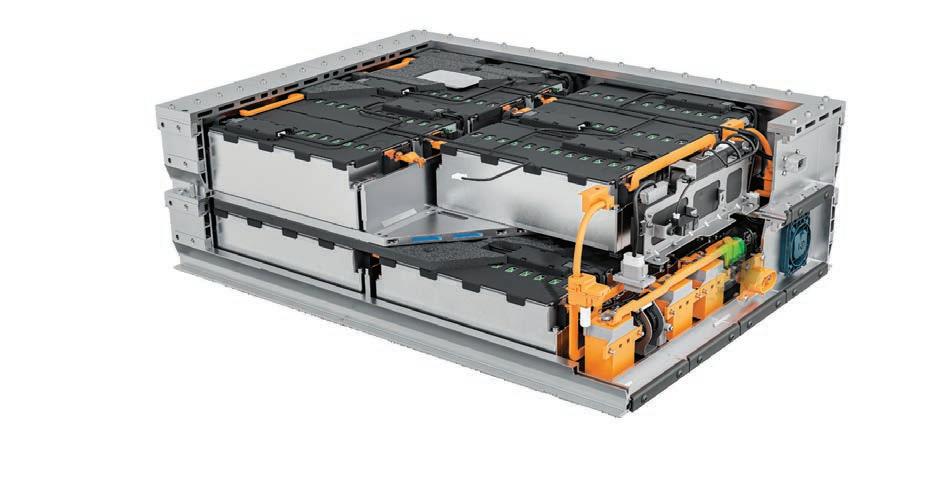
Designed specifically for the world’s commercial vehicles like buses and coaches, Webasto’s newest battery not only meets the applicable standards, but is designed to exceed the industry requirements regarding reliability and safety.
In addition to ECE R100 and R10
approvals, the Standard battery system covers the CE specifications for selected mobile machinery as well as a range of safety standards, including ISO 6469, ISO 19014 and ISO 26262 (ASIL level C). The high-voltage battery is protected against the ingress of dust and water in accordance with IP67.
“Unique testing and validation ensuring the highest quality and safety levels are part of Webasto’s

automotive DNA,” Webasto EC sales and service director in APAC David Byrne previously told ABC.
“With an in-house design, prototyping and comprehensive range of facilities, Webasto tests and validates all components from cells to full systems.”
Like its predecessor, the Standard Battery Pro 40 is protected by a robust aluminum housing. In a space measuring 960 x 687 x 302 millimetres, it meets the highest requirements in terms of safety, availability and stability.
The standardised battery system weighs 297 kilograms, can be integrated vertically or horizontally into vehicles offering system integrators and vehicle manufacturers maximum flexibility during installation. Thanks to its identical dimensions, the high-voltage battery fits into all installation spaces that already use the previous Webasto standard battery system.
Above: The new Standard Battery Pro 40 is designed specifically for buses and coaches
Below: The new battery c an be intergrated vertically or horizontally





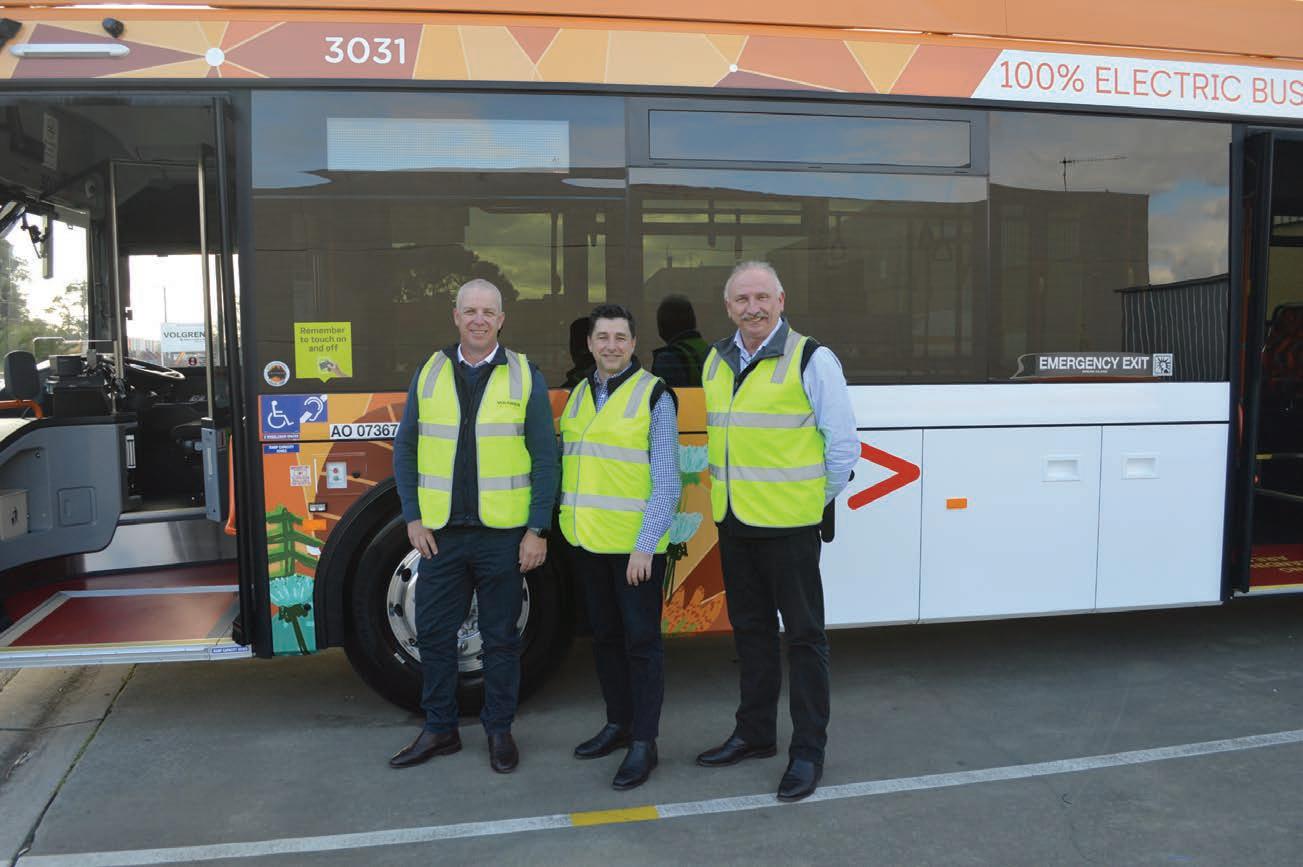
Queensland Thermo King introduced its first electric HVAC unit to Australia five years ago. Having already reached a special milestone, the brand is looking to take its zero-emissions technology to the next level
In recent years, the Australasian bus and coach industry has been at the forefront of a zeroemissions change, leading the way with new technology. While it has been touted as a gradual transition, suppliers like HVAC company Queensland Thermo King (QTK) are proving that not everything has to go slowly when it comes to electric buses.
“The first Thermo King series one electric unit was the standard E1200 model which first came to the local market in 2019,” QTK Group customer solutions manager Allan Lowes told ABC.
“Now, we have successfully supplied and installed over 100
electric AC units on an Australian zero-emissions bus.”
It’s a milestone that has arrived rapidly for Lowes, QTK and its collection of project partners involved, including international major operator Kinetic. Thermo King first supplied its E1200 model over five years ago through import partners and local bodybuilding giant Volgren, with the model going onto chassis provided by BYD, Volvo and King Long.
Having introduced the model to capitalise on a unique opportunity to show its zero-emissions technology capabilities, QTK soon found that it could lead the space in Australia’s bus and coach market.
Above: (L-R) QTK Group customer solutions manager, Allan Lowes, Kinetic communications and customer experience manager Justin Rogers and Volgren sales team leader Greg Reichelt.
“Reaching over 100 electric units already is a proud moment for us – it’s come a bit quicker than we thought it would, but in saying that it could still be moving faster to meet what’s coming on the horizon,” Lowes says.
“We’ve had a lot of learnings in our journey and now have heaps of experience in the space, both in the installation and supply side with our partners, as well as what we can offer our customers in terms of efficiency, performance and experience.”
That first generation Thermo King electric model was more than just a milestone for the HVAC supplier – Volgren sales team leader Greg Reichelt also remembers the
impact the AC unit had on Volgren’s bodybuilding capabilities.
“We built our very first local electric bus with that Thermo King AC unit back in 2019,” Reichelt told ABC.
“We built that first bus and Transdev ended up purchasing it. Now, the partnership has flourished.”
Although the first generation E1200 was a historic unit for QTK and its project partners, the HVAC business quickly moved to evolve its technology. More recently came the E1200 LW – a lightweight version that involved a range of key benefits and features for operators to enjoy.
“The original E1200 had the same foundation operational features that we see in our latest models today, such as the reverse cycle heat pump AC circuit that operates on high voltage DC, but it was a lot larger and heavier back then,” Lowes says.
“It was also longer due to us wanting to get something to the market quickly at the time. Now, as electric vehicle options evolve, we have become more critical with the power consumption and distance of our AC models, enhancing the recharging capabilities.”
As the wider industry seeks to
zero-emissions bus and coach technology, a key factor emerging in this process is weight. Whether it be the weight of bodies, chassis or parts like HVAC systems, reducing the weight of the overall vehicle has been found to extend the battery range and capacity, making zero-emissions models more viable for many operators.
Lowes says weight has been a key driver in Thermo King’s push to evolve its E1200 model, with the reduced weight of the model meaning less power is consumed when running the HVAC unit.
“The reduction of components has helped us reduce the weight of the unit further, while chassis partners have also changed the whole modular design of the vehicle’s frame from a heavier material to aluminium to ensure the entire package is lighter than ever before,” Lowes says.

“We know that lowering the weight of components goes a long way to making the whole bus more efficient, so we’ve worked with manufacturers and our vendors to produce lighter options that have improved performance.”
To reduce the weight, Thermo King has also introduced a new inverter

Above:
The E1200 LW gives Volgren more scope to upgrade its technology and provide vehicles for more passengers than before.
Left: QTK’s technology is ensuring that passengers remain comfortable in all types of places.
also being introduced to remove a few components throughout the unit. This streamlining of parts that make the electric unit excel has meant that servicing has also become easier for customers, with the changes in technology resulting in major benefits.
Lowes is also wary of an emerging trend where bus and coach manufacturers want to have more real estate on the roof to store important parts like batteries. Instead of fighting zero-emissions bus brands, Lowes has allowed QTK to collaborate with them to provide more space around the HVAC unit.
“Space on the roof is reducing more and more nowadays, as everyone is fighting for that space,” Lowes says.
“We don’t want the HVAC unit to take up all of it, so we’ve reduced the length of our model.”
With over 100 E1200 models introduced on local zero-emissions vehicles comes a raft of experience in a short amount of time. Lowes knows that QTK and the wider industry is yet to see the full benefits of the zero-emissions transition, with technology continuing to evolve rapidly to meet growing demands.
The brand’s experience has allowed Lowes and his team to

understand the varying chassis requirements that the market has for zero-emissions HVAC units.
“There’s been some hurdles we’ve experienced along the way in learning what we can do to help our project partners in the zero-emissions journey,” Lowes says.
“We’ve also realised that operators are learning along with us, for a lot of our customers it’s their first electric

vehicle, while other customers like Kinetic are well and truly on the pathway to transitioning.
“We’re all educating ourselves around how to operate this technology best – it all runs so differently to a conventional diesel unit. For us, as a supplier, it’s been about integrating with the chassis to provide more value for manufacturers in enhancing performance, kilometres, range and recharging capabilities.”
On the bodybuilding side of the partnership, Volgren’s long history with QTK and Kinetic has expanded with the trio’s involvement in producing and operating electric bus technology. Now, as Volgren looks to continue growing its zero-emissions bus and coach range, its connection with QTK’s HVAC technology will become pivotal.
“We’ve built in excess of 150 electric vehicles now, and we’ve got some new electric and hydrogen vehicles on the horizon to be released at the upcoming National Bus & Coach Show in September,” Reichelt says.
“The whole industry is evolving so quickly currently – electric bus chassis, bodies and AC units are changing so much that we have to work together to adapt and meet
the requirements.”
While Reichelt has always been grateful for QTK’s partnership, the latter’s recent commitment to reducing the size and weight of its models has taken the good will to a new level. Now, Volgren is enjoying saving as much weight on its buses as possible, with QTK’s E1200 LW giving Volgren more scope to upgrade its technology and provide vehicles for more passengers than before.
“It’s the components that we add to our model that changes it – our body is our body,” Reichelt says.
“Whatever we can find to save weight on an electric bus model is an absolute bonus for us.”
It’s not just the bodybuilding and manufacturing side that is reaping the rewards of Thermo King’s popular electric HVAC model – operator Kinetic is receiving positive reviews for its fleet of zero-emissions buses that feature QTK technology.
“For us, one of the key drivers of customer satisfaction that we measure is the onboard experience,” Kinetic Customer Experience Manager Justin Rogers told ABC.
“When customers board the bus, we want to give them a consistent and comfortable experience”.
Kinetic’s requirements aren’t simple – operating on both Far
North Queensland and the much colder environments of Melbourne and Tasmania means its HVAC units need to be able to cope with extreme temperatures.
“Its important technology keeps passengers comfortable in all types of places,” Rogers says.
“We’re committed to decarbonising our fleet and introducing more electric buses, and currently they’ve been well received by passengers around Melbourne.”
Outside of passengers, Kinetic drivers are also providing positive feedback on the electric buses. While shift driving has now become less taxing with electric buses, the cosy climate created by the HVAC systems is also ensuring everyone remains comfortable and safe.
Having quickly reached the century milestone of electric AC units produced for Australian buses, QTK has no plans to slow down. Lowes is refusing to stop and smell the roses and
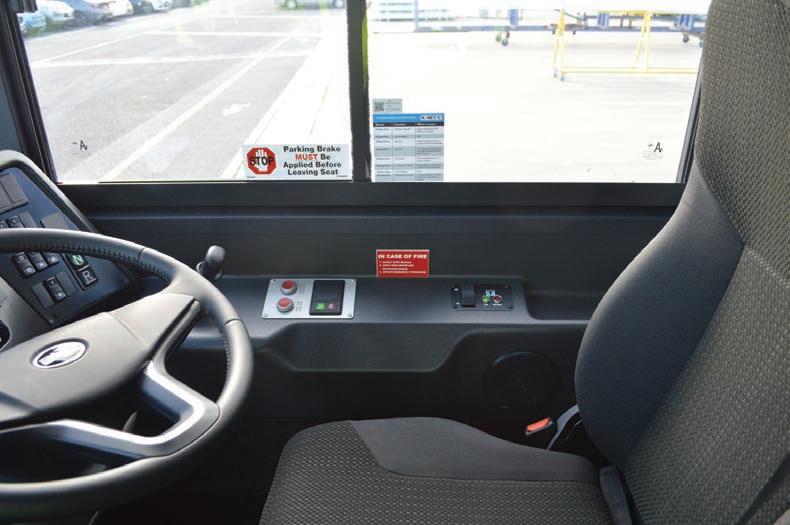
recognise their brand’s achievement. Instead, he sees plenty more for QTK to do to supply high quality AC solutions for the evolving zero-emissions transport space.
“We’re producing the units rapidly as we’re trying to prepare for the big rush that we hope the electric market will

see,” Lowes says.
“We’re ready to go and support everyone – we’re always looking at how we can evolve our product and aftermarket better.
“There’s a lot in the HVAC space that we feel we can do to drive performance benefits for zero-emissions vehicles.”














VDI’s commitment to electrifying the industry is set to deepen with its upcoming electric bus trials in regional NSW in partnership with Transport for NSW

VDI, the national distributor of Yutong buses, is at the forefront of Australia’s electric bus revolution. With a vision to provide innovative and quality electric bus solutions and after-sales service for Australia, VDI is actively supporting the transition to zero-emission public transport through a combination of state trials.
VDI’s commitment to electric bus adoption is evident in its partnership with Transport for NSW (TfNSW). Together, with local bus operators, they are conducting a series of
trials to test various electric bus technologies in different regional settings. These trials aim to collect valuable data on the environmental, social, and economic impacts of electric buses, ultimately informing future procurement and deploymentstrategies.
VDI national fleet sales manager Warren Young, says that the trials are crucial and a welcomed exercise to understanding and demonstrating the costs and feasibility of rolling out electric buses in regional areas.
“Our involvement in these trials isn’t just about testing the

technology, we are also raising awareness and educating the public and the operators about the advantages of electric buses, particularly for communities that may not have considered electric as a viable option.”
Young praises the collaboration with TfNSW, saying that they share a common vision of providing sustainable and innovative transport solutions for the regions.
TfNSW’s ZEB regional trial consists of several deployments of battery electric school buses which are part of a strategic business case to
Below:

bus that has been making strides in Armidale with Edwards Coaches since April 2024.
The next phases will expand the trial’s reach, with VDI deploying two C12E buses and a D7E bus in
thermal runaway. The adoption of such advanced technology is particularly beneficial for regional areas, where the reliability and safety of transportation are paramount. The YESS system’s ability

NSW, where the landscape, weather, road quality, passenger needs, and infrastructure options are different from in metro areas. But VDI trusts the Yutong electric buses to do well and achieve the outcome that TfNSW, bus operators, schools, communities, and industry partners all expect.
The benefits of electric buses are undeniable and these trials not only represent a significant step towards the adoption of battery electric transportation in the state but also in helping to meet reduced carbon emissions targets. They also showcase how regional communities can lead the way in embracing innovative technologies for a sustainable future.
The regional trials are expected to run for 18 months each. Throughout
this period, VDI and TfNSW will continue to monitor and evaluate the electric buses, sharing data and outcomes. The trials will play a crucial role in shaping the future procurement and deployment of electric buses in regional NSW.
VDI’s dedication to supporting TfNSW’s vision for zero-emission public transport is unwavering. The company is committed to providing innovative and high-quality electric bus solutions for regional NSW. VDI is also eager to share its experience and expertise with the industry and the public, highlighting its electric bus products and services.
With its long history of electric bus manufacturing and deployment globally, Yutong, VDI’s supplier, brings valuable experience and technology to the Australian market. This partnership ensures that VDI can offer innovative electric bus solutions that meet the unique needs of regional NSW.


Young says that the company is proud to partner with TfNSW in testing and demonstrating the advantages of electric buses in regional areas.
“These trials give us the ability to identify and generate hard data and statistics on the performance of Transport’s zero-emission bus offerings, which will help inform
future decisions and grow the battery electric bus market.” he says.
With their continued involvement in initiatives like this, VDI demonstrate their commitment to addressing challenges, educating communities, and collaborating with industry partners as states and the nation transition to cleaner transportation.





While BYD has already dominated the electric bus market, it now has its eyes set on improving its aftersales support
In an industry overwhelmed with new technological advancements and improvements, global leader in New Energy vehicles BYD continues to prove it is ahead of the curve.
Dominating a large share of the global electric bus market with over 105,000 buses in service outside of China, BYD’s innovation was cemented at the end of 2023 when it was crowned the global leader in new energy vehicle sales after amassing a record-breaking three million annual sales.
Now, BYD Australia in its drive to provide market leading Commercial Vehicles Aftersales support within the Australian bus sector has recently appointed Grant Mascord as BYD Australia’s National Aftersales Manager as the first step, with his technical and industry experience
proving invaluable.
“From the time the bus is delivered till its end of service life, it’s our responsibility to ensure it’s running the right way,” Mascord told ABC.
“With optimised aftersales care, breakdowns are minimised, and when they do happen, they’re fixed quickly.”
Working for 25 years as an engineer for Qantas, Mascord says he understands how important it is to keep the vehicles on the road and getting vehicles up and running as soon as possible for operators.
“I worked for years fulfilling maintenance for the aircraft and scheduling it all to the time requirements of an airline,” Mascord says.
“As you could understand, you run to some pretty tight deadlines, and it can be detrimental if work isn’t done to time or to standard.
“It works exactly the same for bus operators,” he says. “We want to ensure they can get their buses back on the road as soon as possible.”
While aircraft occupied a quarter century of his life, Mascord has spent the better part of a decade since honing his knowledge of buses.
Joining the bus industry back in 2013, looking after contract management and aftersales for Volvo Bus, Mascord quickly learnt the ins and outs of priorities for operators. He then went over to Scania in 2016, and Custom Denning in 2019 before officially joining BYD Australia in February this year.
“My knowledge grew from every job, learning valuable insight into what works the best, and how to better processes and systems to make everything seamless,” Mascord says. In ensuring this seamless
approach, BYD Australia has taken steps to further localise its support, providing extensive training and local service delivery to its employees and customers.
“We can ensure quicker turnarounds when customers can rely on the knowledge and skillsets of our local team on the ground in Australia,” Mascord says.
“By equipping them with everything needed, customers can rest assured their worries and queries can be dealt by a local aftersales support team without having to refer to HQ overseas.”
Another key factor to success Mascord says, is equipping the customers and operators with training prior to taking the buses home. This would include identifying the differences between different buses, new models and technology, general maintenance and familiarisation with the electrical systems.
“By loading them up with this knowledge, it helps operators maintain their vehicles to the best standards within their own manpower.”
The next step in BYD’s aftersales drive is the appointment of Truck Tech as an approved BYD Australia commercial vehicle repairer providing operators with additional mechanical support.
Starting back in 2007, Truck Tech has steadily grown to become one of the leading Fleet maintenance and repair experts in the electric and hydrogen vehicle industry for operators.
Currently, Truck Tech’s Fleet maintenance services cover NSW, including Sydney and greater Metro, as
well as the Central Coast region, and Victoria through its Dandenong site. In February, Truck Tech also opened up a workshop in Yatala, Queensland, with the brand now having more than 140 staff and over 70 service vehicles across Australia’s east coast.
The new partnership not only supports BYD Australia in providing excellent care and service delivery to customers but aligns with Truck Tech’s vision of supporting the electric vehicle industry and being a front runner, leading the way in aftersales support of electric buses in the local market.
“Our goals and visions aligned,” Truck Tech CEO Barry Saad told ABC. “We always wanted to partner with companies who had the same goals and aspirations as us.
“Initial conversations between BYD Australia and Truck Tech happened in January with introductions made. We then did some work with them and formalised everything six months later.
“This partnership is a key piece to Truck Tech’s goal of becoming the leader in aftersales repairs and Fleet maintenance for zero emission vehicles. It’s a huge step forward for us. We’re very excited as a business to support the clients and the brand.”
While Truck Tech didn’t intend to enter the bus industry, starting its journey fixing trucks out of the back of Saad’s ute, the team are now finding opportunities to evolve and complete a wider range of tasks for the sector.
Saad says the most popular service the business has is completing on-site services and repairs. This often allows Truck Tech technicians to venture to operator depots or provide crucial
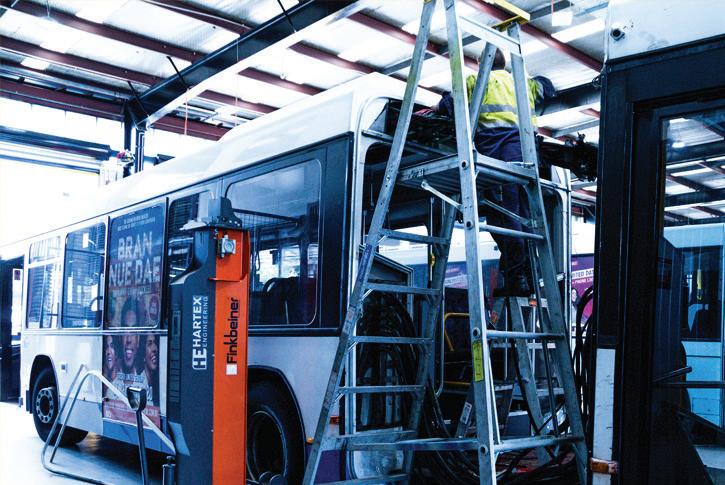
workshop support for larger jobs.

a pick-up and delivery service to operators where Truck Tech drivers pick up a bus in need of repair from the depot, take it back to a Truck Tech workshop for repairs, then drop the bus back to the operator when it’s fixed.
“We’re someone that cares about the asset and the vehicle’s uptime,” Saad says.
The long-standing relationship Truck Tech has had with its customers underpins another reason why BYD Australia was keen to have them on board.
“Truck Tech are trusted within the industry,” Mascord says.
“They have great relationships established already and have proven they care about the vehicles and customers.”
Moving forward, BYD Australia aims to continue improving their aftersales service, with Mascord saying, “it’s only up from here.”
“We are going to continue improving and changing to better suit our customers and their needs.”
“We’re not going to do things half done and then do it again later. We want to ensure everything we do is to a high standard.”
For now, BYD still maintains its reputation as a global leader of New Energy vehicles, with two new electric bus models to be exhibited at the upcoming National Bus and Coach Show in September in Brisbane.
To preview the latest BYD electric buses, visit the BYD Australia team at stand L01.
en appointed as National Aftersales Manager
Below: BYD’s partnership with Truck Tech will provide crucial aftersales care for customers and operators

Hawera-based operator
Weir Bros is celebrating its 50th anniversary this year, with its heritage of service to the communities of New Zealand’s South Taranaki stretching back further than its half-century.
Much of the company’s success is down to Clarke Weir, now 80 years of age, working in the firm every day and living with his wife Margaret beside the depot as they have done for 57 years. His self-taught mechanical skills and ability to repair and adapt components have kept the growing fleet on the road and the running costs down.
Through the years, Clarke has
tackled everything from repowering to repainting, and he has improvised and always ‘found a way’ despite having no formal mechanical qualifications.
His father Hugh was a local operator of ‘one or two’ buses from as far back as the late ‘40s in an era when a car was a luxury that most families in post-war New Zealand just couldn’t afford. Along with a school contract, ‘Hughie’ Weir’s red and white 33-seat Ford V8 bus was popular for sports trips, shopping excursions and late-night cinema runs – at any community event in South Taranaki, the vehicle the school kids called the ‘Coca-Cola bus’ was
Above: Flashback to the 1980s: current Operations Manager Callum Chapman is held by his grandfather Hugh Weir in front of the ex-Rutherford Motors NZMB Canadian Ford V8 school bus.
in service to take families where they wanted to go.
The birth of the current operation came in 1974. Clarke and his brother Garth worked in the parts industry at the local branch of Motor Specialties (known as ‘Motospecs’ or just ‘Specs’ for short). The oil and gas industry was in its infancy in Taranaki and the Weir brothers saw an opportunity to take on a contract to transport workers to and from the Shell BP Todd Kapuni gas field.
Motospecs manager Tom Priest allowed the Weirs to ‘arrive late and go early’, so for some time the bus operation was part-time, using a side-valve 1946 Ford V8 bus and a
Commer van, later replaced with a CF Bedford.
From that contract work came the opportunity to work with Kapuni School and Okaiawa School.
Through the years Weir brothers Clarke, John, David and Garth have all contributed to the business.
Since those early days, the fleet has grown to 40 vehicles, including a strong contingent of mini-buses.
Clarke has handed over the day-to-day running of Weir Bros to the next generation. His nephew Callum Chapman is operations manager and one of Clarke’s daughters Stacy Manktelow is office manager.
Although it’s a proudly Taranaki-based business, coaches branded ‘Weir Tours New Zealand’ can be seen all over the country.
From very humble beginnings hastened by the closure of Hawera’s Regent cinema, Weirs began taking groups away to shows in both Auckland and Wellington. The current offering of a seven-day Mid-Winter Escape, a South Island High Country Stations tour, an eight-day West Coast Explorer or a
foray into the World of Wearable Arts in Spring in Wellington demonstrates a diverse tour product offering to an extensive nationwide customer database built up over many years.
Clarke has many great memories of great seats at some fantastic shows: like Rolling Stones, Les Miserables, Cats, Jersey Boys, Riverdance, Paul McCartney — and he is proud to have been part of opening up a world of entertainment to local people.
“We take people away, see how willing they are to give things a go and embrace the itinerary we’ve created, and it’s always really enjoyable,” he says.
The tour operation is ‘all go’ from October to May and in recent years they have also run tailor-made tours for international students at other times.
Like any business, there are challenges on the horizon. Clarke believes most people don’t realise the stress that Covid-19 placed on both operators and drivers alike — changes in the Ministry of Education and the government’s cost-cutting drive loom large among challenges for the future.
However, the business is committed to continuing in the ways that have made it successful for over half a century: looking after the staff, purchasing locally where possible, working in with other operators and always giving personal service.
Third-generation member Callum Chapman spent many years in the oil and gas industry both in NZ and overseas and had no intention of joining the firm until the opportunity arose in 2018. He is very aware of the legacy of the business he fronts today proudly supporting a number of unique Taranaki events along with some schools and organisations which have loyally supported Weirs through the years.
“There will have been many opportunities to expand outside the district, but our local service ethic has kept us building up the business while still focused on the Taranaki community,” Chapman says.
“Our staff have been our greatest asset with some who have several decades of service with us – our retired staff are still very welcome here, especially at morning teatime!”


As a well-known community and industry icon, Laurie Pincini is ensuring family business Rockleigh Tours remains as safe and popular as ever with its latest acquisitions
SCANIA
Laurie Pincini is part of a famous family in the bus and coach industry. With his grandfather having founded transport business Rockleigh Tours 80 years ago, Pincini has grown to lead the business based in Diggers Rest, adjacent to Melbourne’s Tullamarine Airport.
While Rockleigh Tours has become a major member of the charter, alpine and coach markets, Pincini is more than simply a bus veteran.
“Ten days before the last Victorian state election I decided to run against a local member and got just under four per cent of the vote,” Pincini says. “It’s amazing the number of people
that have asked me to put my hand up again and they’ll help out this time.
“It’s sort of anything where you see somebody needs a hand, whether it be just a local family even that’s doing it hard, we try to turn our hand at helping out. Helping people is worth more than money.”
In his time spent at Diggers Rest, the Rockleigh Tours owner has been president of the local footy club, president of the local kindergarten, president of the local junior footy club and treasurer of the senior football club. He was also chair of the local country fair committee and then ran a couple of country fairs (on his property) because the council
Above: (L-R) Sean Cuthbertson, Nathan Pincini, Laurie Pincini and Darryn Hemphill
wouldn’t allow them to run it.
“We run them here on behalf of the Lions Club. We’ve fundraised for the bushfire appeal, we’ve fundraised for tsunami victims over the years,” he says.
“The best bit is our drivers get involved too. When we did the Good Friday Appeal, they dressed up in rabbit or tin man costumes. They helped build props for the day; they love it. You can see the creativity come out of them.”
Rockleigh Tours dates back to the late 19th century with the pioneering Pincini family. Its evolution from a modest mail run to a vibrant touring service now sees it cover the nation

When the fourth-generation family business first opened its doors, it ran services for school groups, sporting clubs and international visitors. Over the years it has continued on this theme, growing to meet client needs.
Now, with inbound tourism returning after the COVID impacted years, Pincini is bullish about business potential. To meet this optimism, Rockleigh Tours is acquiring new vehicles from the likes of global OEM Scania.
“Over the past six months, Rockleigh Tours’ new Scania powered Coach Design charter bus has racked up 80,000 km, and it hasn’t been parked and sat there looking pretty,” Pincini says.
Out of Rockleigh’s 22-bus fleet, 15 are Scanias that constantly move on private charter, cruise ship, snowfield, V/Line rail replacement and school trips. Some days see Pincini and his buses moving from 3.30AM to Lara on rail replacement duties.
Pincini says the family business has relied on Scania’s equipment and technology over the years, with vehicles and a monitoring system helping keep the fleet safe.
The fuel efficiency and service from Scania Bus has allowed Pincini to excel the family business, with his staff hanging tough through some difficult periods to now give back to the
transport business started by his grandfather 80 years ago, Pincini and wife Joanne run a children’s farm called Animal Land, situated on the same 32-acre plot that is home to the bus company.
As a deeply committed community leader, Pincini recently held a special event at Animal Land that attracted 650 people and raised more than $33,687 for the Royal Children’s Hospital in Melbourne.
“We were hit hard by COVID but I was determined to hang on to my staff, so we had them working across other parts of our business to be sure that when the charter work restarted, we were ready to go,” Pincini says.
“You can’t afford to lose staff these days, and those we have are valuable to us.
“Many of the staff of 56 working on the farm or for the bus company are family members. Whenever we have a vacancy, we hunt around the extended family for someone to slot in.
“Joanne is the financial manager, and her brother Craig works for us as well. At various times my three brothers have driven for us too. We have had all four of our children work for the bus business; both my daughters were drivers and my son Nathan currently runs the workshop while Zac drives.”
On top of this, Pincini’s son-in-law
Pincini’s elder daughter’s fiancé Kyle. It’s all a family affair for the Pincinis.
“Now my grandchildren are starting to take an interest in buses, and they will be the fifth generation to be involved,” he says.
“I see the business continuing to grow. My kids are heavily involved in the selection of the fleet. It’s only going to get better and more efficient.
“As Scania invests in its R&D, we’re the beneficiary of that, so anything that Scania develops we try to grab it.
During a family holiday, Nathan and I visited the factory in Sweden and the testing ground.
“It gives you reassurance that you’re buying quality product, especially because of the variation in our driving environment. I’ve got photos of one of our Scanias – on one day it is at Uluru


and three days later it’s covered in snow and ice because it’s come from Uluru back to Mount Hotham.”
Much like its dedication to quality vehicles, Rockleigh Tours also has a shared passion among its staff for driving coaches. Customer feedback has shown that the brand’s enthusiasm is a clear marketing strategy.
“All of our drivers introduce themselves to the customers at the start of the journey and they talk to them and are interested in them and because we’re usually not on a tight schedule, we’re not chasing them,” Pincini says.
“At the end of a journey, you’ll always see the drivers being warmly thanked for their efforts. I just did a run with 45 school kids, and as they
got off, they all said, ‘thank you, Laurie, safe journey’.
“Our business is 99 per cent charter orientated – compared to doing a route service, we’re transporting people that want to be there. Generally speaking, most are very happy to be on board.”
Rockleigh has had a few notable passengers on its buses over the years, including pop sensation Ed Sheeran, who was transported during Triple M’s Mystery Music event. A semi-disguised Sheeran sat in the bus full of concert goers heading to Hanging Rock before revealing his identity mid-journey. Pandemonium ensued.
“Most of our fleet, as you can tell by the seat spacings, is focused on passenger comfort. We don’t

squeeze them all up, except for the three school spec ones where we seat 57,” Pincini says.
“Mostly it’s 49 seats with lots of legroom, reclining seats and a USB port between the seats or in the roof.
“These Coach Design buses have three removable seats to provide two wheelchair places. On the next one, because it’s a three-axle, we’ll have a bit more weight up our sleeve, so we might go with five removable seats to be able to allow extra wheelchairs, as we’ve created a small niche market for ourselves with DDA clients, but also older folk, unsteady on their feet quite like being lifted up into the bus on the chairlift.”
As a bus industry veteran, Pincini is as committed to local manufacturing as he is to promoting his own community, with Rockleigh Tours tending to specify local Australian bodybuilders. Currently new Coach Concepts and Coach Design two-axle coaches are the newest on the fleet with a further new vehicle soon to arrive.
“I’m a big ‘buy-Australian’ person,” he says. “It does cost me a few dollars more, but I expect people to support local Australian companies, so therefore I do the same. If it’s going cost me more to do that, I’ll do it, because we all want a job.
“We like having the flexibility of modifying the design to exactly what we want from the body
builder. Largely this is to support our customers. Our latest bit of feedback-generated modification has been to put lower-rise stairs in at the entry, adding another step and broadening the step so that you can put more of your foot on each step as you enter or exit.
“Many customers are older and appreciate the bigger steps for increased stability. We have extended the grab handles around the entry as well, to give them maximum support. This design is being taken up by other operators now.”
Rockleigh Tours’ coaches are specified with wheelchair access routinely, with a portable call AED device on every bus.
“I believe we are the first operator to put one in each bus and it can mean the difference between life and death, especially if touring in remote areas,” Pincini says.
“Even if you are in a regional area, you can wait 40-45 minutes for an ambulance. In the outback you can wait hours. Once we had to get the RFDS, and they took six hours to get to us.”
Each of the Rockleigh vehicles are
also GPS tracked. Pincini and his team have devised their own vehicle monitoring system, accessed via an iPad bolted to the dash, created by Logmaster and ITM Projects to track real-time location and vehicle performance data, and monitor for fatigue.
“The drivers manually enter data and the order of the questions changes each time. If they enter an incorrect answer, they get a call because we want to be sure they are fit to drive. If they are not, we send out a replacement driver,” Pincini says.
“The drivers can photo any defect and log it in the system using their phones, so the mechanics can assess it there and then and decide whether it’s safe or not and determine if we need to send a replacement vehicle if they’ve been in an accident.
“The fatigue management is a big deal. The system alerts the driver an hour before he must have a break. Plus, we were probably one of the first bus companies to go to electronic work diaries.”
Pincini believes monitoring fatigue is a major factor in bus and coach safety, especially with valuable cargo on
board. Often, Rockleigh Tours is carting kids around Victoria, so keeping them safe is incredibly important.
Looking forward, Rockleigh Tours is committed to fostering the next generation of drivers and workers to ensure the family business continues operating in the local community. Out of five apprentices the operator has had to date, three have won apprentice of the year awards, with the average age of drivers sitting at around 32.
“We want to give people a go and we’ll put time and effort where a lot of other places won’t,” Pincini says.
“We spend the time with them, sit in with them on drives, so they see how to do it. Every winter, we put new drivers through an advanced driving course, a snow course, just in case they have to go to the snowfields.
“We plan to turn over the buses between five and seven years, and they are doing around 100,000 km per year. We have this Coach Concepts bus that we got in 2019 that’s done 480,000 km already, so it has been working hard, especially given the quiet Covid period.
“We’ve got more on the way – I tend to buy everything in pairs.”

The BCA is seeing the impact of governmental changes on the ability to attract and retain drivers in the industry as their chief executive Delaney Myer explains
In New Zealand some recent changes to central government budgets and immigration settings have us worried about our ongoing ability to attract and retain drivers. After an unprecedented driver shortage in our urban services that drew the ire of the public, we’ve enjoyed relatively stable staffing levels over the last year, assisted by increased wages, (jointly funded by operators, local government and central government), and the addition of drivers to the Immigration Green List, which offered a pathway to residence.
These immigration settings were always intended to be a temporary fix, while the sector took a tri-partite approach to improving conditions to make us better able to recruit and retain a locally sourced workforce.
The Government recently announced it had slammed the door on residence for offshore drivers, and then, in a surprise move, Budget 24 sliced funding of $47m allocated to assist with improving conditions to enhance the recruitment and retention of urban drivers.
Having the band-aid ripped off before the wounds were healed leaves us exposed.
There were different opinions on how that money should be spent, and it’s likely that lack of sector cohesion was a factor in the funding being whipped away. It’s these differing opinions that we as an industry need to better grapple with. We must get better at “agreeing to disagree” and staying focussed on the things we do agree on.
I sat down with Richard Wagstaff, the President of the Council of Trade Unions for a free and frank conversation. We agree on far more than we disagree on. Yet historically, the unions and industry have, (at least publicly - and that’s what our stakeholders see), been entirely focussed on the points of conflict, and we fail to get meaningful change. Maybe it’s time to agree that there have been historical examples of unbecoming conduct on both sides of the fence, agree to disagree on who’s at fault, and move forward. Trust takes time, but we’ve made a start. The negotiations for the ill-fated Fair Pay Agreements were conducted in good spirit, respectfully, and with agreement on many points. Boiling this down to a simple statement: We all want a sustainable workforce, where our people feel safe, respected, supported and fairly paid.
For urban public transport, the other key group that shares that desired outcome with us is our clients and funders - the public sector. We appear to have the same underlying barriers to collective problem solving: Trust. It’s very hard to operate without the trust of your clients and stakeholders, and yet evidence would suggest that’s where we are. A case in point is the debacle of a legislative review, known as the “Sustainable Public Transport Framework”. The legislation is anti-private sector – and the first thing the private sector transport providers should ask is, “why did this happen?” Some simple operational policy
tweaks could have been made to fix the known flaws with the Public Transport Operating Model. So, why was that not the pathway chosen?
Simple: We didn’t enjoy the trust of our stakeholders to deliver services ongoing, so they sought to rebalance the playing field.
Now I don’t believe for a moment that councils can manage bus/depot assets as effectively as our private sector operators. But it seems some councils don’t share that view. Some are prepared to invest hundreds of millions of dollars to wrestle asset control from the private sector. What would cause them to want to take this risk at a time where they are so tightly pressed financially and where they don’t have the pre-requisite skill set? The only logical answer is that they don’t trust the private sector to deliver services in the best interests of the public.
We can choose to continue to fight (or even sit back passively) from a position of logic, knowing that the private sector is best placed to deliver ongoing services and expecting common sense will prevail. But this is not going to be a battle of logic – it’s going to be one of hearts and minds. So really, the next question is, what are we going to do about it?
The Bus and Coach Association is about to start the development of an Industry Strategy and these questions are some of the ones that we need to address as we shape a future of sustainable passenger transport for New Zealand.




KlineFire are an Australian owned business with operations on a global scale. We have been specialising in the supply, assembly and servicing of fire protection for over 60 years.
PURPLE K
Dry chemical agent that is Non-Corrosive, Non-Conductive, Environmentally Friendly and Heat Absorbing
MAINTENANCE
Simple yet advanced system that can be maintained by the end user, with the benefit of vast cost savings
AS5062 & P-MARK
CE RTIFIED
Full compliance for all types of buses; Complies with Australian Standards
DETECTION
Optical Sensor; Armoured & Linear Thermal; Hydrogen Sensor; Smoke Detection
DISPLAYS
CAN Integration; Small Bus Module; Mini Display
DATA LOGGER
6 & 12 Channel; CAN Integration



ueensland has experienced some 15 serious bus crashes in the past 12 months, with the most tragic being the recent accident in Gumlu on June 30, where three lives were lost. QBIC and the entire bus industry extend their deepest condolences to the victims’ families and the first responders affected by this devastating event.
Bus and road safety are intrinsically linked, and QBIC applauds the efforts of the National Heavy Vehicle Regulator (NHVR) through campaigns like “We Need Space” and “Don’t #uck with a Truck.” These campaigns emphasise crucial safety messages regarding the interaction with heavy vehicles, benefiting all road users.
Currently, the Queensland Government and the Department of Transport and Main Roads (TMR) are implementing changes to the Passenger Transport Legislation through the introduction of Safety Duties.
The Explanatory Notes to the bill highlight that “the current prescriptive requirements applying to non-personalised transport services may not encompass the full breadth of potential hazards and risks.”
They also state that “a prescriptive approach may not effectively
anticipate or manage emerging safety risks associated with rapidly changing vehicle technology (and fuels) and emerging passenger transport service models.”
This is notable given vehicle technology and fuel standards are typically a federal government responsibility, implying that approved and registered vehicles should be considered known entities and low risk.
The industry currently faces many contentious issues however the most contentious issues: school bus seatbelts, vehicle life / frame inspections, and passenger standards are forefront in the mind of all operators. These issues significantly impact service provision and costs for government-contracted operators and the standard of safety offered to the public and school children. At a time when concerns over the rising road toll are prominent from all sectors including the Government, it is crucial not to compromise on safety or service standards.
The Government and TMR have a primary duty under the NHVR Chain of Responsibility as the principal contractor but seem to be grappling with its dual role as a regulator and principal contractor. This is best seen under current state-based legislation,
Above: QBIC emphasises the importance of maintaining high safety standards on buses.Image: hedgehog94-stock. adobe.com
where the Government have exempted TMR from their own Safety Duties. This seems at odds with other safety legislation where both NHVR and WHS Qld safety duties ensure that Government at all levels are held accountable and not excluded from respective jurisdiction coverage.
Queensland has been a national leader in fleet safety and management, a status achieved through its proactive prescriptive response to past fatal bus accidents. The state boasts the youngest bus fleet in the country, equipped with advanced safety features and improved environmental impacts, a testament to the lessons learned and the actions taken to mitigate risks as much as possible. As the Queensland Government and TMR move forward with these legislative and regulatory changes, QBIC emphasizes the importance of maintaining high safety standards and providing adequate financial resources to bus operators to ensure the continuation of a high standard. Ensuring that these safety duty measures are practical and economically supported is essential for the continued safety and reliability of passenger transport services in Queensland and don’t result in a backward step in safety for passengers and school children.

Public transport users in New Zealand will soon be able to pay for their bus and train tickets with phones, credit cards or Motu Move cards
New Zealand’s new ticketing payment system, Motu Move, aims to provide passengers the option to pay for public transport using contactless debit or credit cards, digital payment methods and Motu Move cards.
Created as part of a partnership between the New Zealand Transport Agency Waka Kotahi (NZTA) and 13
the National Ticketing Solution (NTS) is designed to provide a range of easy-to-use payment methods for all public transport across the country.
Set to start its rollout in the Canterbury region this December, passengers will no longer have to stress about leaving public transport cards at home, with a range of other payment options available.

Left: Contactless payment methods will soon be available for New Zealand transport. Image: bernardbodo / stock.adobe.com
(Cubic) has been diligently preparing, configuring and testing the NTS to support implementation.
Cubic Transport vice president Dino Beverakis says the team has been working to ensure that Motu Move will deliver a world-class, user-friendly payment experience for all New Zealanders.
“The new payment options will remove barriers to public transport use for those who don’t currently carry a prepaid card or who travel in different regions,” Beverakis says.
“It will also make using public transport easier for visitors and first-time users as they won’t need to worry about buying a separate prepaid card.
“By making payments easier, Motu Move will also encourage more people to use public transport more often, which will help reduce road congestion.”
Be sure not to miss out on an opportunity to attend these fantastic in-person events
AUGUST 5
BusWA
REGIONAL TRIPS BEGIN
AUGUST 9
QBIC
FUTURE LEADERS LUNCHEON
AUGUST 30
BusNSW
NEXTGEN LEADERS FORUM
September
SEPTEMBER 6
BusWA
REGIONAL TRIPS END
SEPTEMBER 17-18
BIC
NATIONAL BUS AND COACH SHOW
BRISBANE CONVENTION AND EXHIBITION CENTRE
October
OCTOBER 1-3
BCA
NEW ZEALAND CONFERENCE, DUE DROP EVENTS CENTRE, AUCKLAND
OCTOBER 9-10
BusNSW 2024 MEMBER CONFERENCE
OCTOBER 18-19
QBIC
CAIRNS REGIONAL MEMBER FORUMOCTOBER 29-31
BusNSW
TECHNICAL COMMITTEE MEETINGS AND AGM
November
NOVEMBER 8
QBIC
REGIONAL MEMBER FORUM
NOVEMBER 14-15
BusNSW
ASSOCIATE MEMBERS SEMINAR AND PARTNER’S LUNCH
NOVEMBER 20-22
BIC
NATIONAL CONFERENCE, HOBART
December
DECEMBER 2
BusNSW DELEGATES FORUM AND CHRISTMAS FUNCTION








The winner of ABC’s Best Bus is a stunning shot of a Benalla Bus Lines coach soaking up the sun
of finalists vying it out for top spot.
Matthew Healey sent over ten shots of his stunning Red and White Coach Australia MAN charter bus trapsing all around the place while Greg O’Donohue’s striking combo of sunset and snow almost took out the top spot.
While the competition keeps getting fiercer, Tam’s photo was a clear winner.
With two pictures to pick from, seeing the Scania parked up at the depot was a definite yes.
“Here is Benalla’s Bus Lines’ brand
new custom endeavour bodied Scania K320CB at the depot,” Tam told ABC.
For his win, Tam received a free 12-month subscription to ABC Magazine, while the winning photo is live as ABC’s Facebook page cover for all of July.
If you want to be like Tam and have your best photo shown off courtesy of Best Bus, brought to you by VDI Australia, then don’t forget to send through your photos for August and the rest of 2024 via our website or by keeping an eye on our Facebook page for more details.
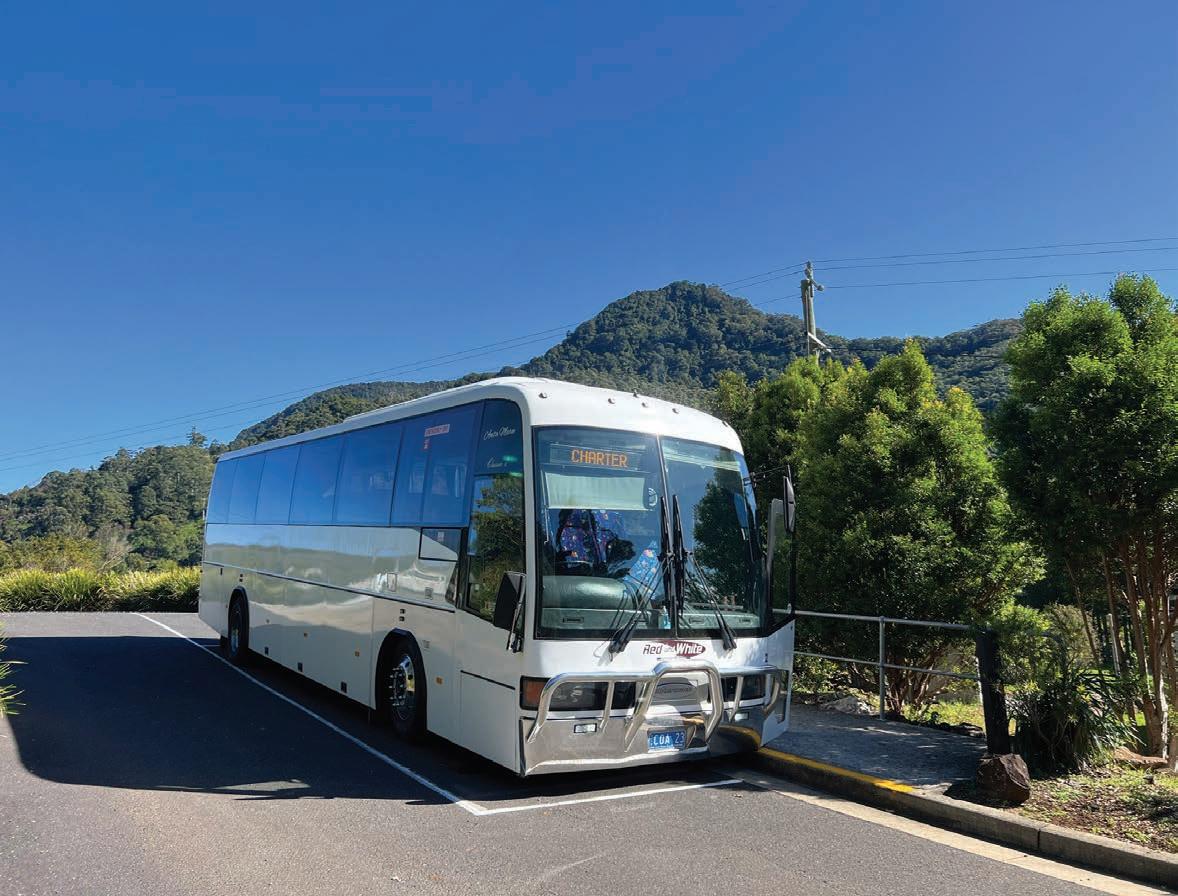
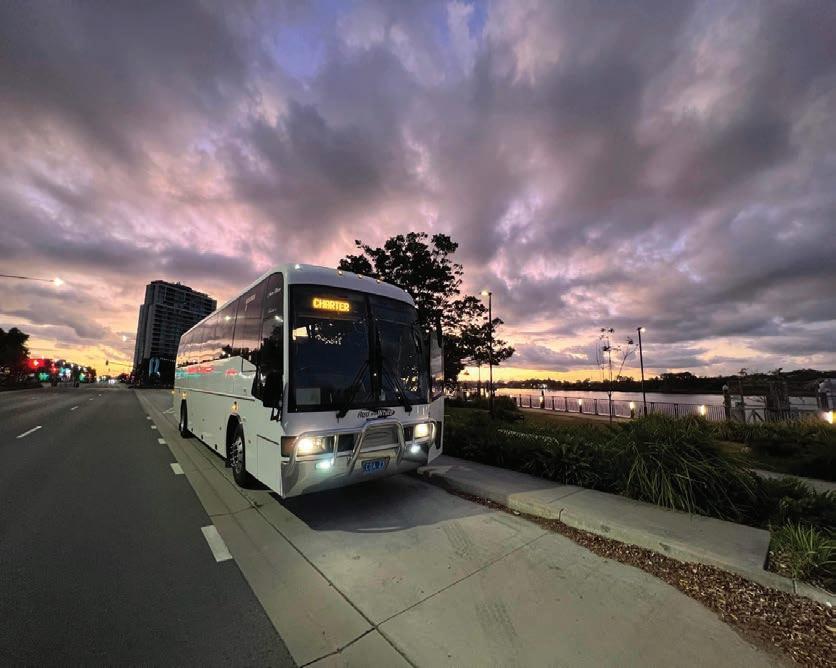

At VDI Australia, we believe that excellent service goes beyond the sale. Our comprehensive after-sales support ensures your fleet stays on the road, minimizing downtime and maximizing performance. With extensive parts availability and a national footprint, we're always ready to respond quickly and efficiently. Trust our team of experts to provide the dependable service you need, backed by advanced technology and a commitment to excellence.









2024’s Australian bus and coach deliveries continue to rise, with another successful month showing no sign of slowing down
The middle of the year has marked one of the highest points for Australian bus and coach deliveries, with numbers expected to keep climbing. With previous months staying consistent in the 130s, June capitalised on May’s strong numbers and surpassed them by two, delivering 158 buses and coaches in the month.
Volvo once again dominated the chassis market, this time with a whopping 69 deliveries in the month of June. Scania, Yutong and MAN all battled it out for the second spot, ultimately tying with 13 deliveries each for the month. Mercedes-Benz wasn’t far behind, almost joining the trio with 11 deliveries. After the leaders, BCI and Custom Denning both sat together with nine deliveries, while I-Bus and King Long trailed along with five each. From there, Challenger and BLK couldn’t be split with four each, wrapping up with BYD on three deliveries for the month.
While not surpassing it’s May stats, Volgren still pulled an incredible feat this month, with the body builder making 57 deliveries. It was more than two times ahead of the next best Irizar (23), who beat out BCI (16) and Yutong (13). Custom Denning was on Yutong’s tail, with 12 deliveries for June, while King Long, BLK and I-Bus each had
Victoria’s usual reign as number one was shot this month, with Queensland smashing out 55 deliveries.
five for the month. From there, Challenger recorded four deliveries, while Marcopolo and Global Bus Ventures each recorded three. Coach Concepts, Nexport and Bus Tech each had two while Omnibus, Coach Design and Scania rallied at the end with one delivery each.
It should come as no surprise that with 156 deliveries, seating giant McConnell would be pulling numbers, with 80 deliveries reported in June. Sege increased on its May numbers, with 38 units to take out second place, while Yutong and StyleRide were awarded the bronze medal with 11 deliveries a piece. APM, King Long and Fainsa tied with five units each, with Marcopolo finishing the market off with one delivery. Coachair once again overtook reigning champ Thermo King this month, recording a whopping 45 deliveries over their 39. Hispacold
Above: Volgren once again took out top spot for bodybuilder deliveries this month. Image: Volgren
Turn overleaf for comprehensive bus and coach delivery information for June. Please note all data is as supplied from manufacturers, at their discretion.
took out third with 23 deliveries, while Valeo (16) and Cling-Yutong (13) followed behind closely. King Long, Songz and MCC each recorded a steady five units, with Spheros almost joining the trio on four. Konvekta rounded out the A/C deliveries this month with one unit.
Victoria’s usual reign as number one was shot this month, with Queensland smashing out 55 deliveries. The usual champ followed behind on 43 deliveries, while New South Wales (26) and Western Australia (23) battled it out for third. Following our victors were South Australia (seven) and ACT (one) finalising the deliveries for the sector.
Turn overleaf for comprehensive bus and coach delivery information for May. Please note all data is as supplied from manufacturers, at their discretion.
It should come as no surprise that with 156 deliveries, seating giant McConnell would be pulling numbers, with 80 deliveries reported in June. Sege increased on its May numbers, with 38 units to take out second place, while Yutong and StyleRide were awarded the bronze medal with 11 deliveries a piece. APM, King Long and Fainsa tied with five units each, with Marcopolo finishing the market off with one delivery.
While not surpassing it’s May stats, Volgren still pulled an incredible feat this month, with the body builder making 57 deliveries. It was more than two times ahead of the next best Irizar (23), who beat out BCI (16) and Yutong (13). Custom Denning was on Yutong’s tail, with 12 deliveries for June, while King Long, BLK and I-Bus each had 5 for the month. From there, Challenger recorded four deliveries, while Marcopolo and Global Bus Ventures each recorded three. Coach Concepts, Nexport and Bus Tech each had two while Omnibus, Coach Design and Scania rallied at the end with one delivery each.
Coachair once again overtook reigning champ Thermo King this month, recording a whopping 45 deliveries over their 39. Hispacold took out third with 23 deliveries, while Valeo (16) and Cling-Yutong (13) followed behind closely. King Long, Songz and MCC each recorded a steady five units, with Spheros almost joining the trio on four. Konvekta rounded out the A/C deliveries this month with one unit.
Volvo once again dominated the chassis market, this time with a whopping 69 deliveries in the month of June. Scania, Yutong and MAN all battled it out for the second spot, ultimately tying with 13 deliveries each for the month. Mercedes-Benz wasn’t far behind, almost joining the trio with 11 deliveries. After the leaders, BCI and Custom Denning both sat together with nine deliveries, while I-Bus and King Long trailed along with five each. From there, Challenger and BLK couldn’t be split with four each, wrapping up with BYD on three deliveries for the month.
The Hobart Fun Bus is back with a bang as new owners look to revamp the Tasmanian party experience for locals
For years, the Hobart Fun Bus has been a cultural icon in Tasmania’s capital. Whether it be birthday parties, event transfers or any other general celebrations, the Fun Bus has brought joy to Hobart over the past decade.
Now, it has new owners, with Stephen and Rachael Hindle taking over the business.
“We originally hopped onboard the bus for a work Christmas party last year and we enjoyed our time on it,” Stephen Hindle told ABC.
“We then saw it pop up for sale and thought why not have a go at running it!”
The couple both enjoy going to music festivals and other events, meaning the Fun Bus now allows them to get involved in the industry. Having seen the potential in the bus and its entertaining service, the couple aimed to get involved and try


“We both have no experience running buses, but we wanted to get involved in the industry and have a crack at it,” Hindle says.
“We wanted to be in control of a fun party festival vibe. We both have experience in the disability sector and I was previously a chef, so we are trying something completely new.”
The revamped Hobart Fun Bus ran its first service again in May, with Stephen and Rachael giving the bus a makeover. As well as repainting the bus and reupholstering the seats, the pair also added new lights, a fresh sound system and are in the midst of installing a DJ booth onboard to welcome a new era for the attraction.
“After getting our appropriate licences to finalise the sale, we gave the bus a revamp to give it a fresh vibe,” Hindle says.
“We got the outside painted too before relaunching it. It was matte black on the exterior and plain white on the interior when we first bought it.
“Now, it is incredibly bright and colourful. Since then, we’ve seen bookings come rolling in.”
A key part of the new and improved Hobart Fun Bus is a themed nights package, where passengers can enjoy a range of eras while travelling and partying on the bus. With partnerships also struck with local businesses to provide food, drink and experience offers outside of the bus trip, the Hindles are hopeful that they’re onto a winner.
“We’ve picked some new venues to take people to and we’re running a stack of parties now after giving the bus that fresh feel,” Hindle says.
“Now the Fun Bus is up and running again, we’ll look at what we can add to the services in future to provide more fun for people.
“We’ve received a lot of positive feedback to date. All we want to do is invite people to a safe space where they can enjoy themselves in a glamorous and psychedelic environment.”



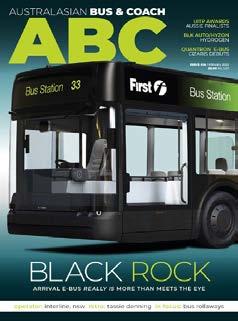



the best and only choice to meet your requirements.
ü Isuzu 4HK1-TCC turbo charged diesel engine (with no AdBlue or DPF)
ü Isuzu AMT with fully automatic and clutchless manual modes
ü Isuzu power steering and rear spring suspension
ü 26-32 fixed APM passenger seats with lap sash seatbelts (incl. driver)
ü High capacity air conditioning, ideal for Australian environments
ü Reversing camera equipped
ü High level of build quality
ü Integrated cab / body (not pod type)
ü All seats are spacious / equal comfort unlike competitors
ü Spacious cabin (best in class)
ü Ideal flat floor for ease of aisle access
ü Fully supported Australia wide by Isuzu Care
ü Isuzu national dealer network
ü Bus Stop's network of service agents
ü Air Conditioning Service Agent SUPPORTED NATIONWIDE BY